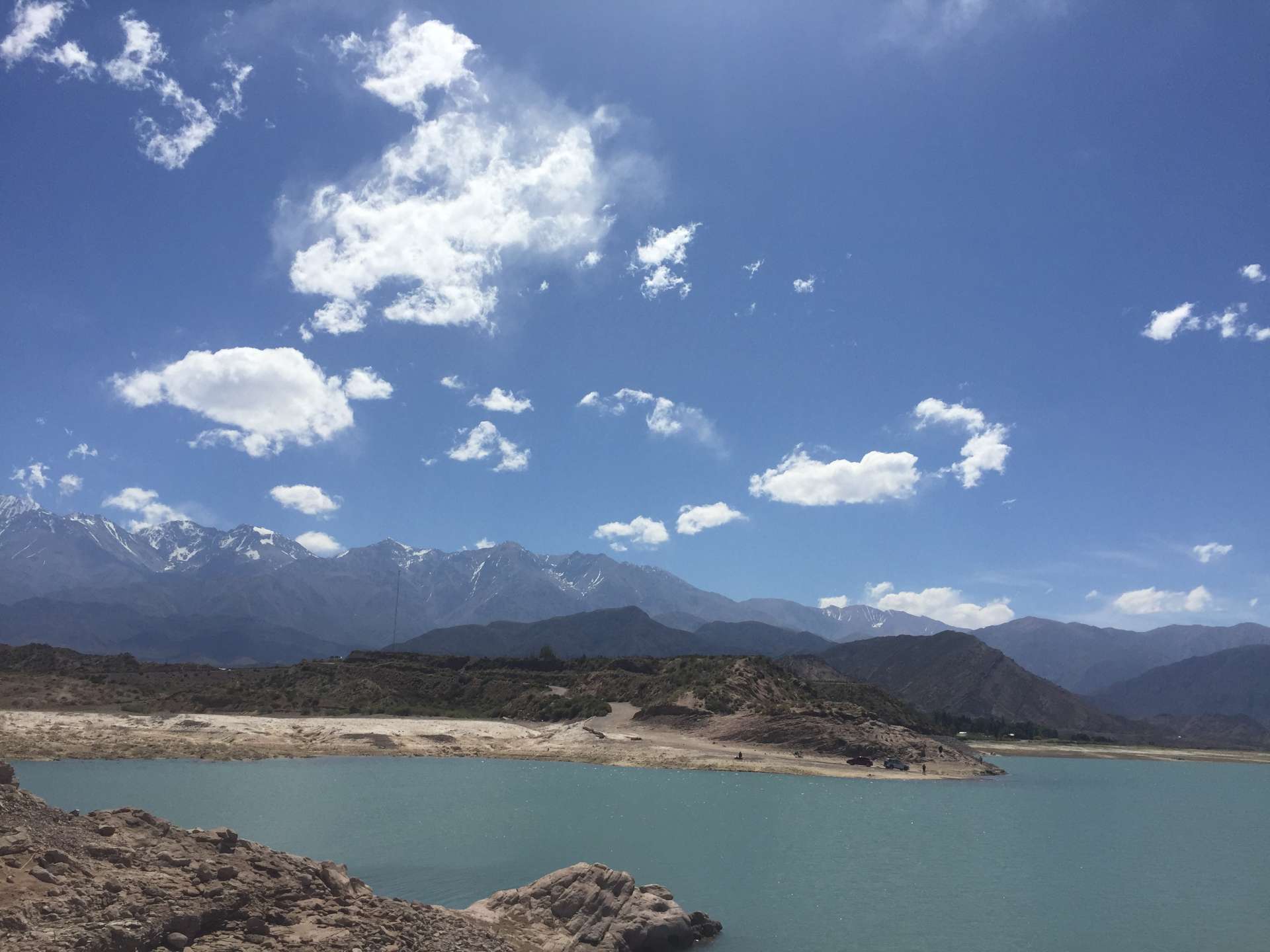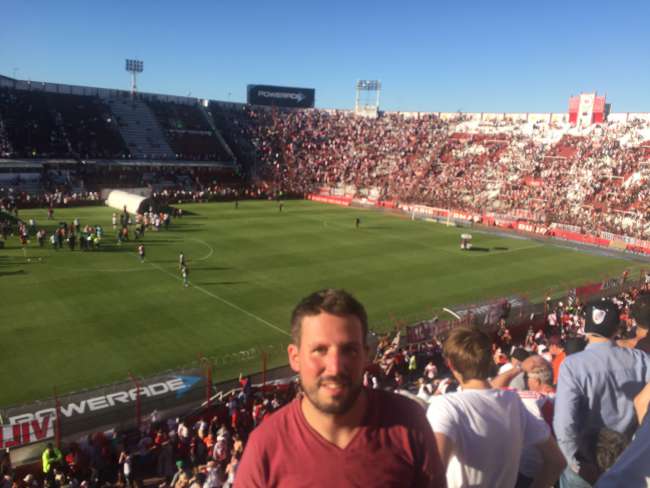On the Inca Trail to Machu Picchu
Публикувано: 17.12.2016
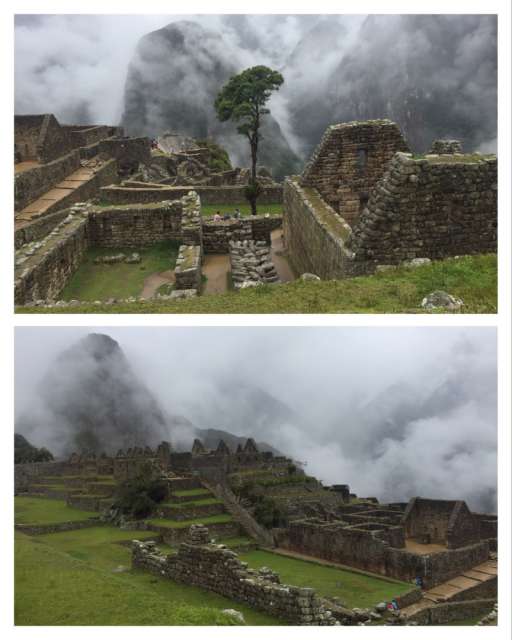
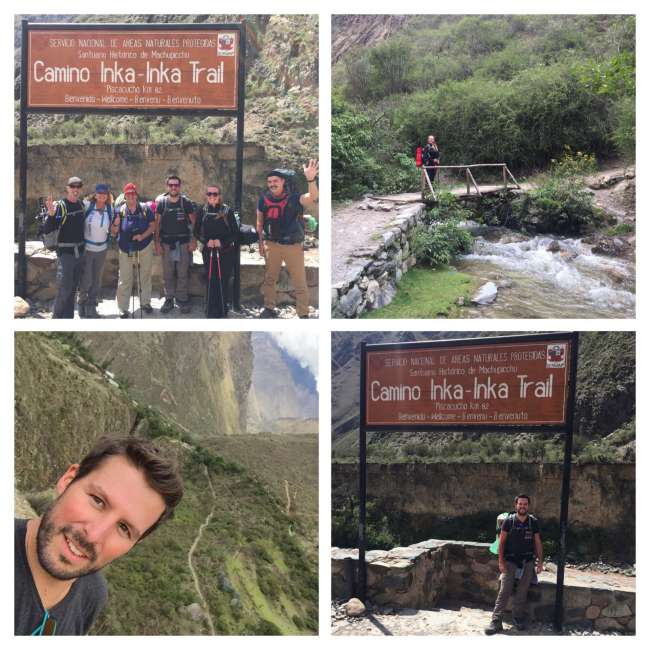
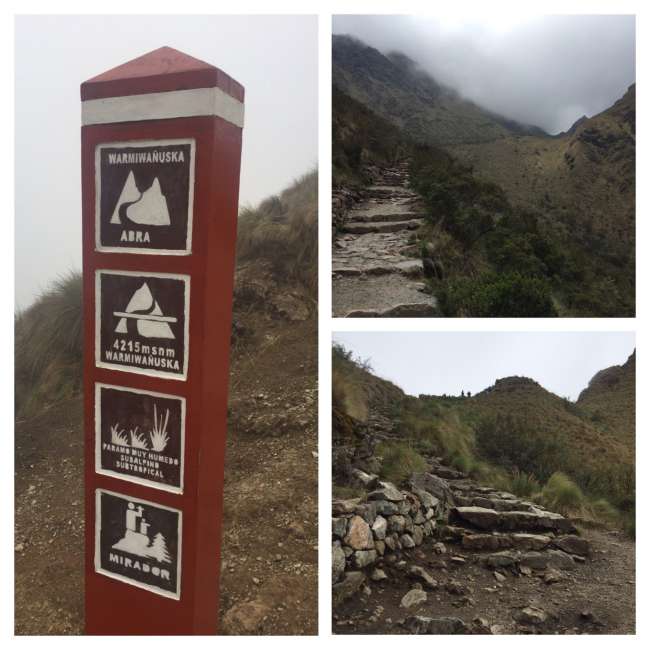
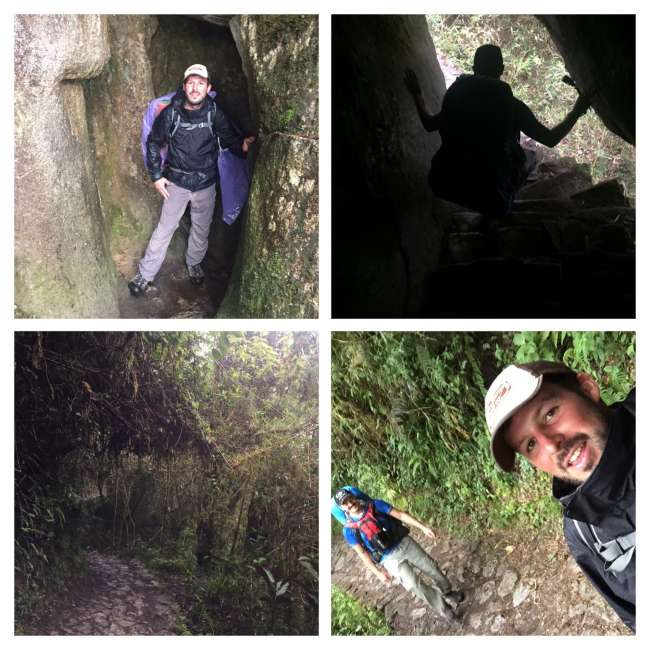
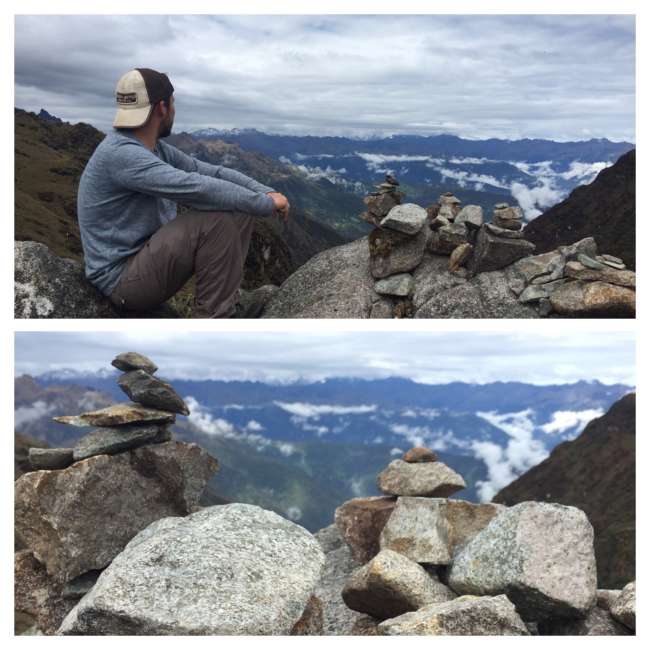
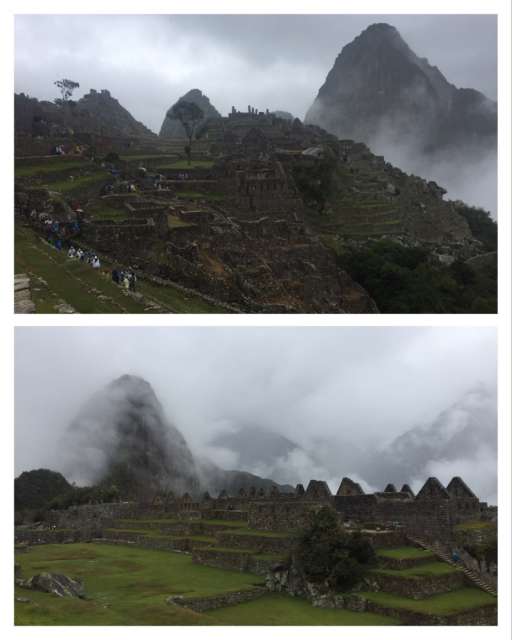
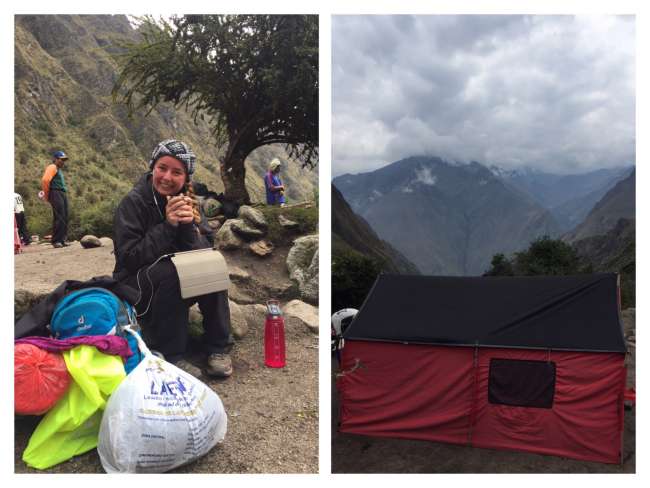
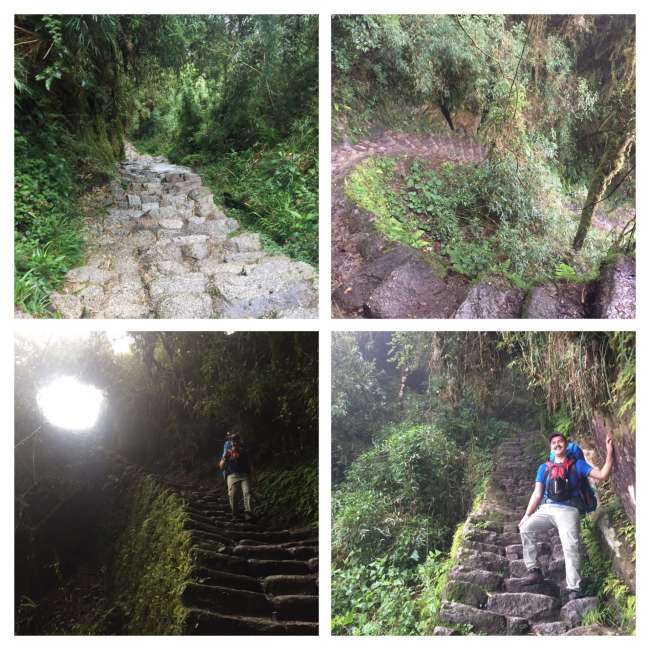
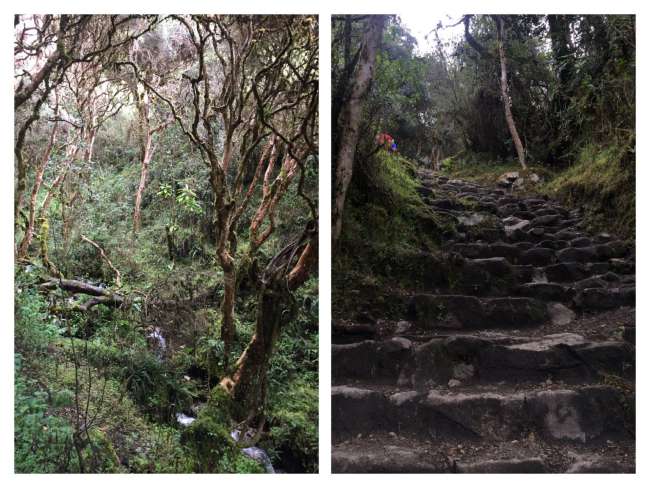
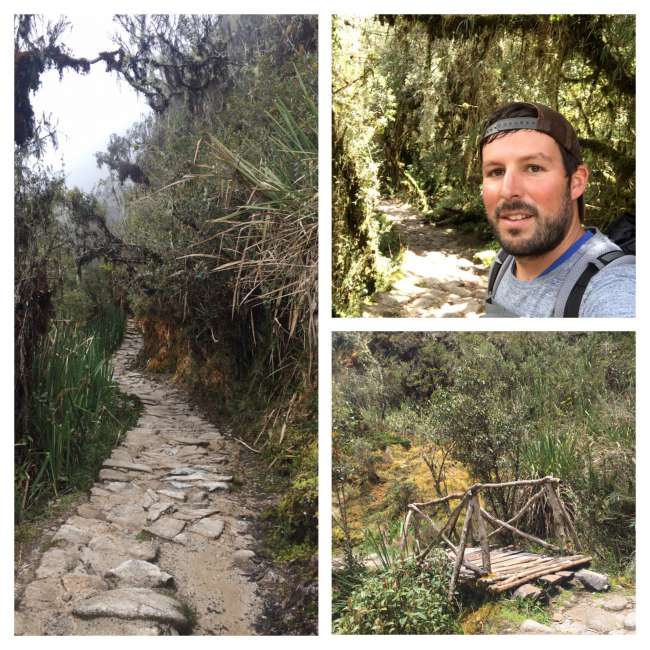
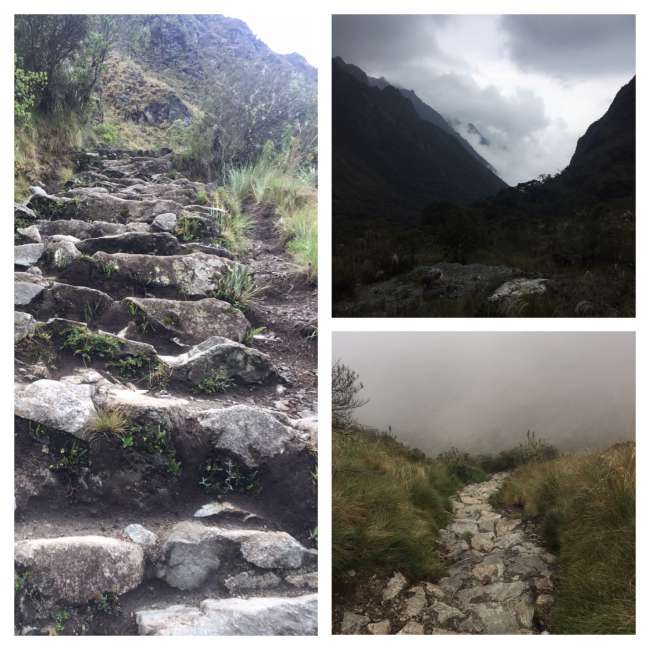
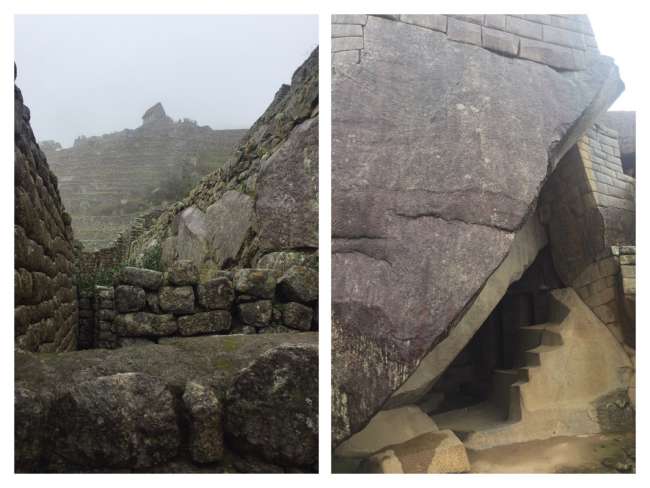
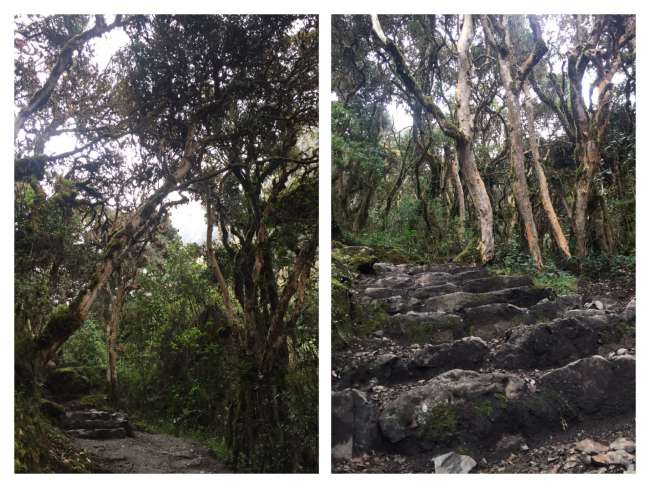
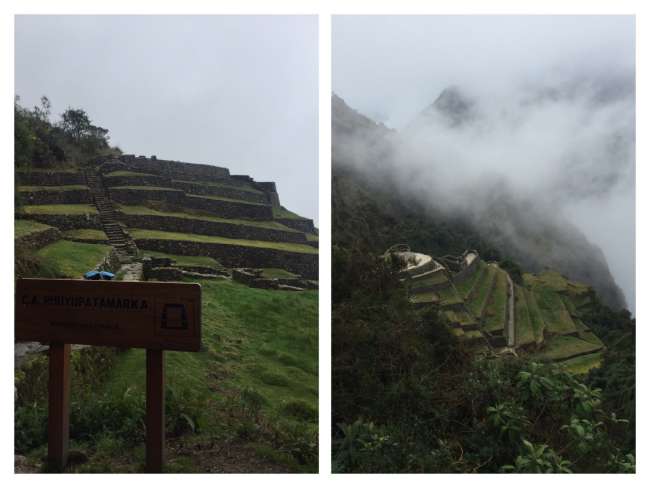
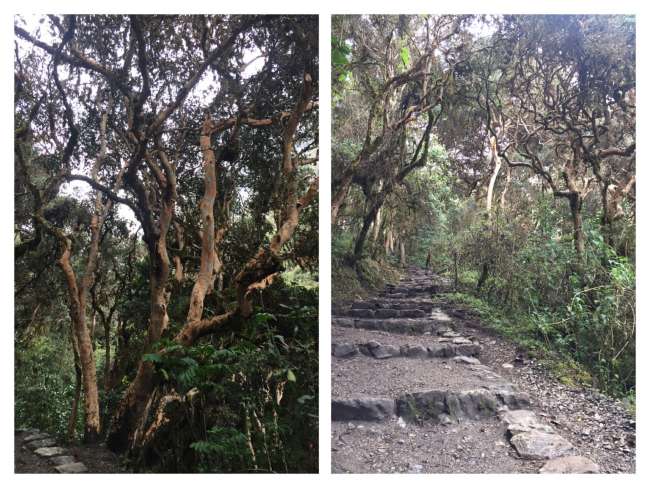
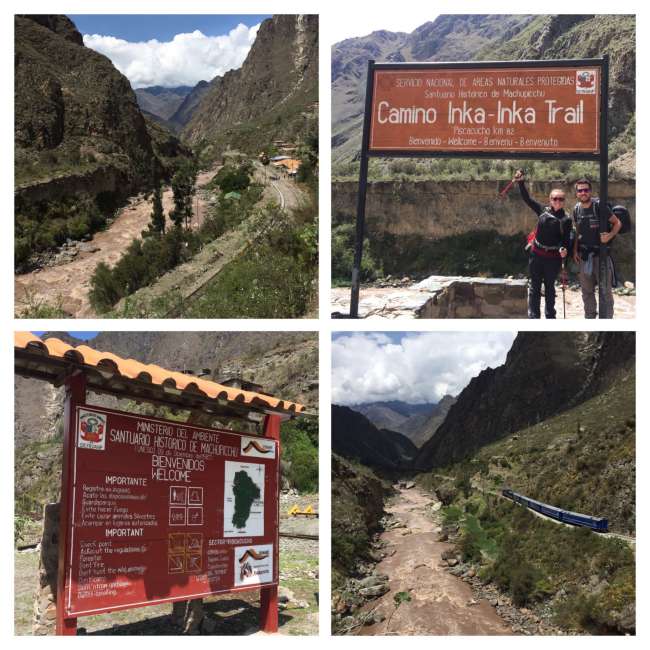
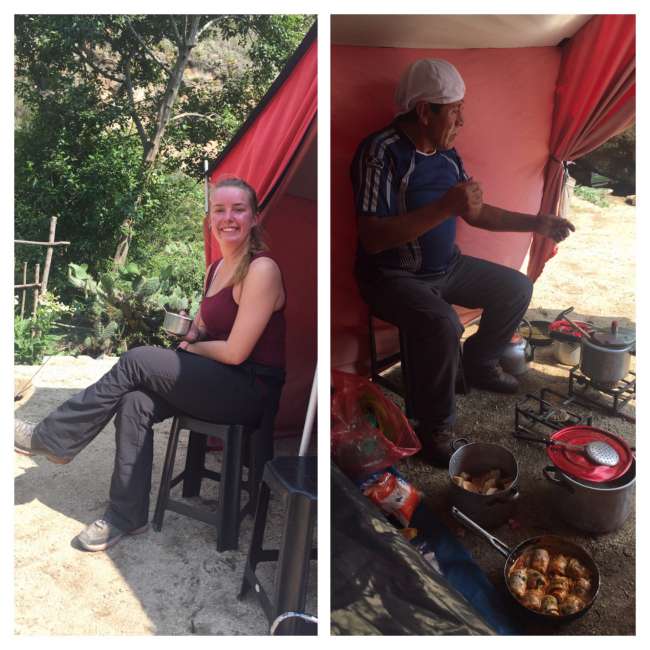
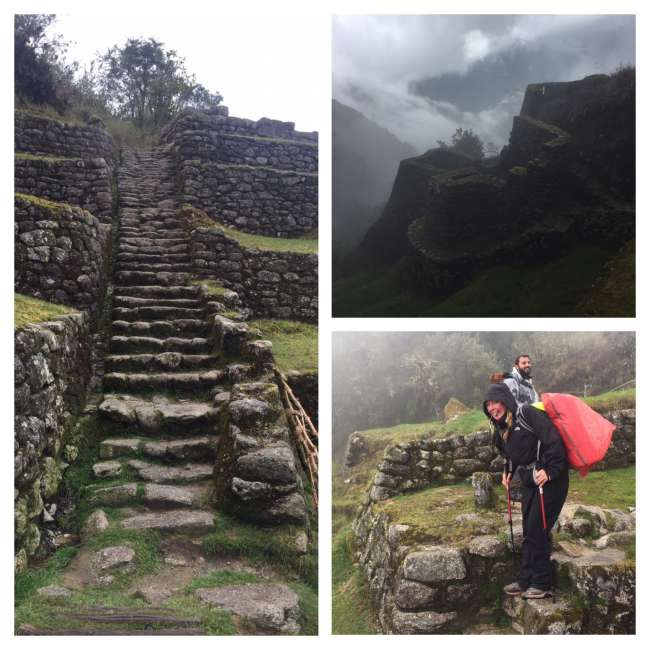
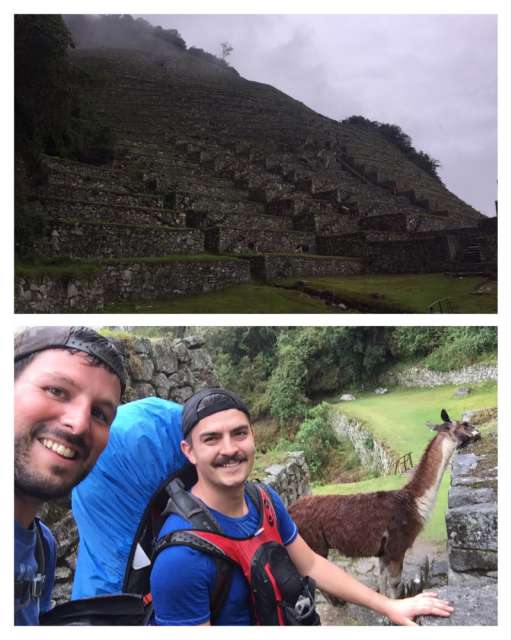
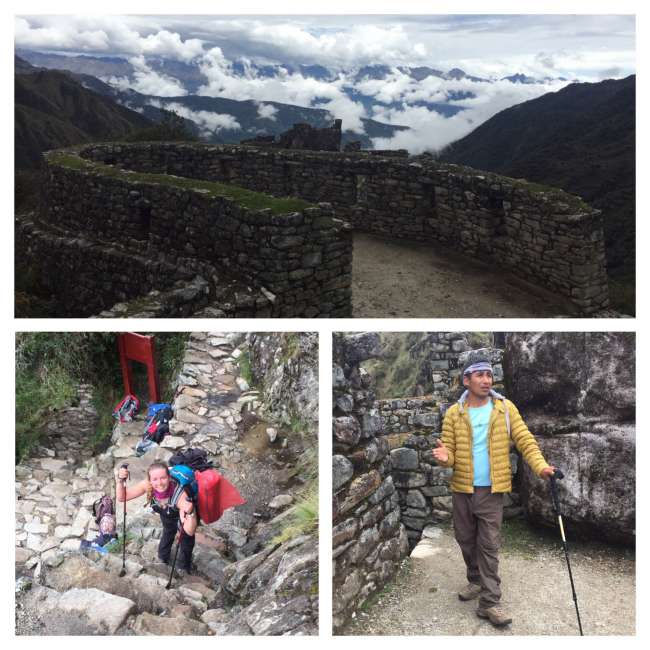
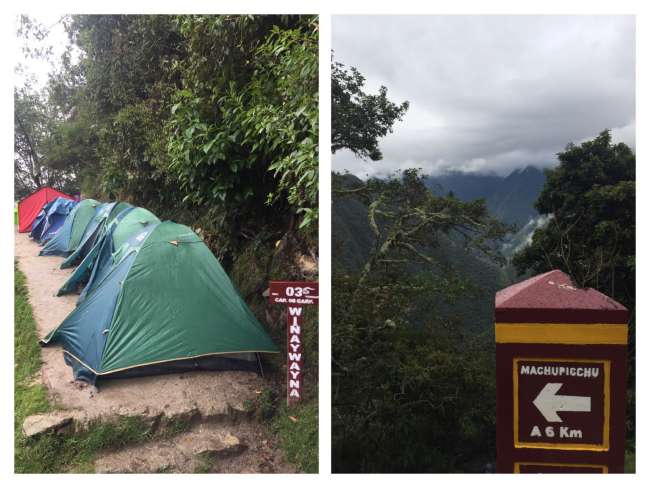
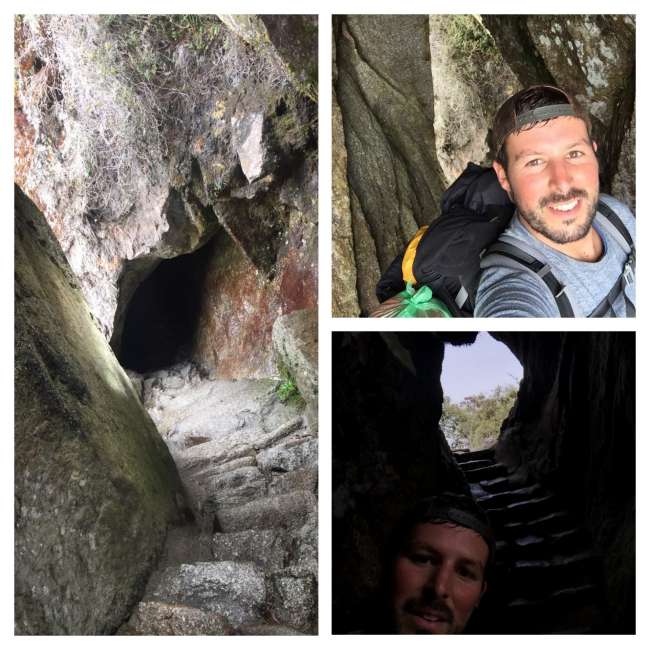
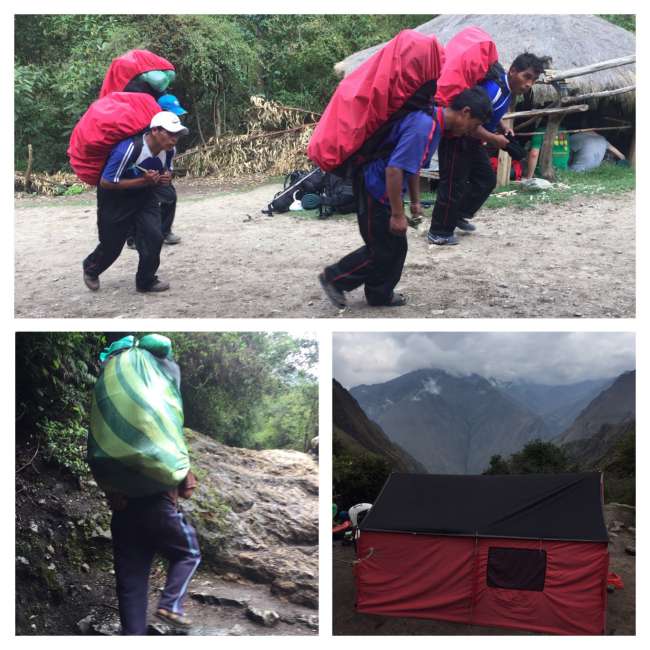
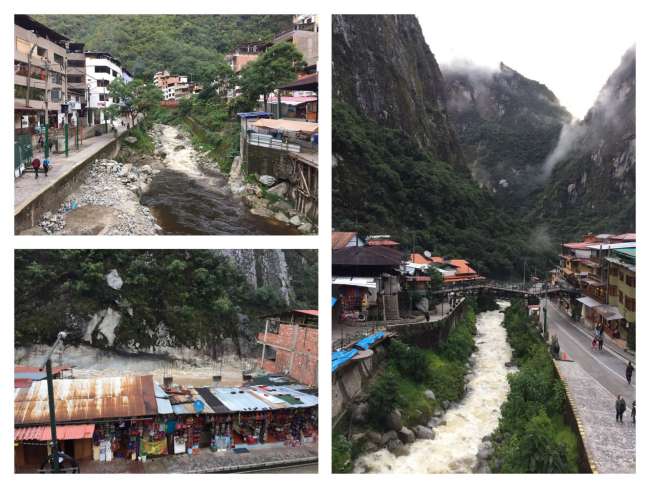
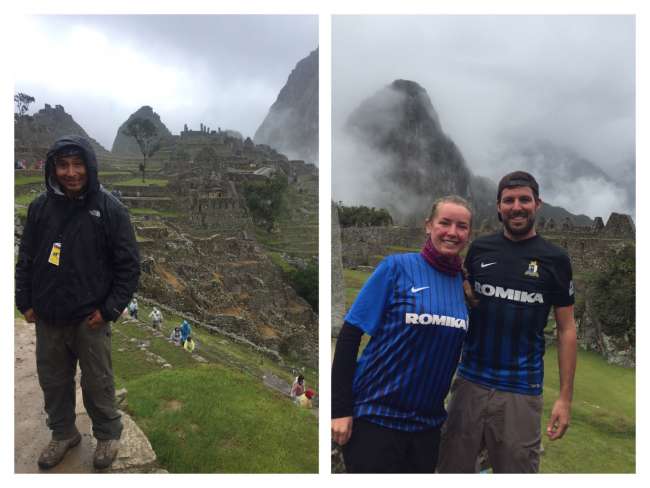
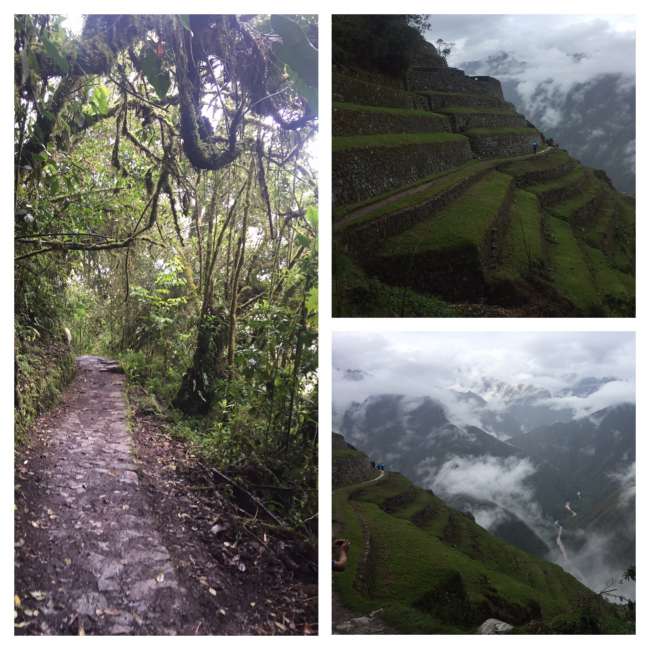
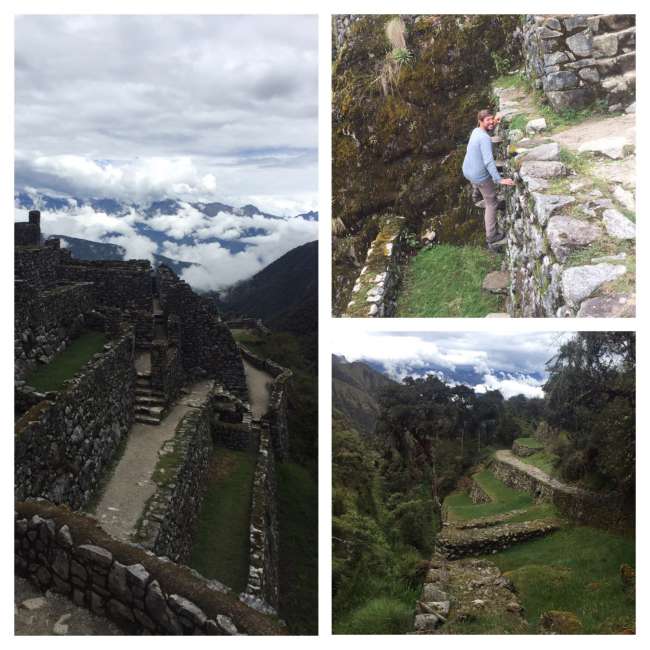
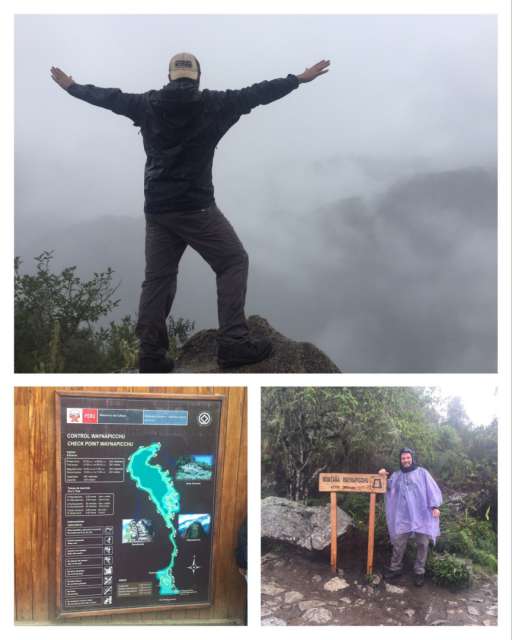
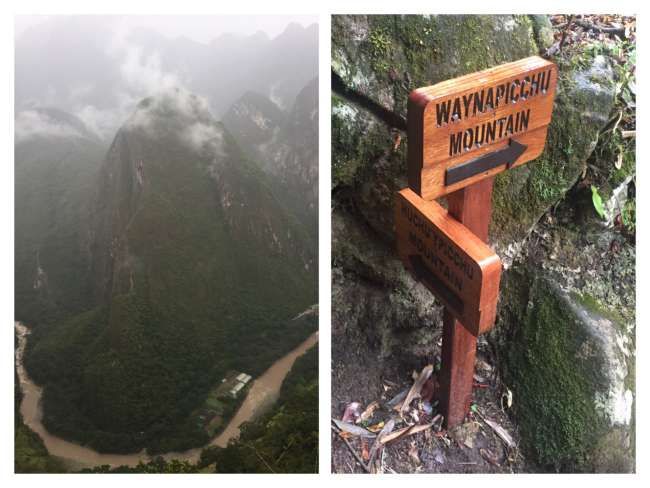
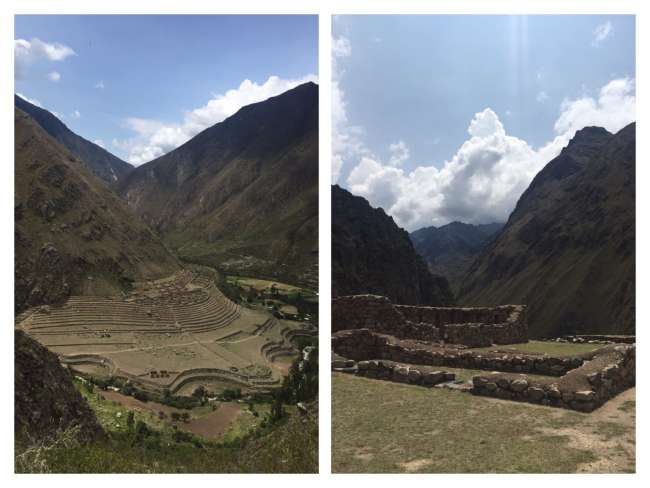
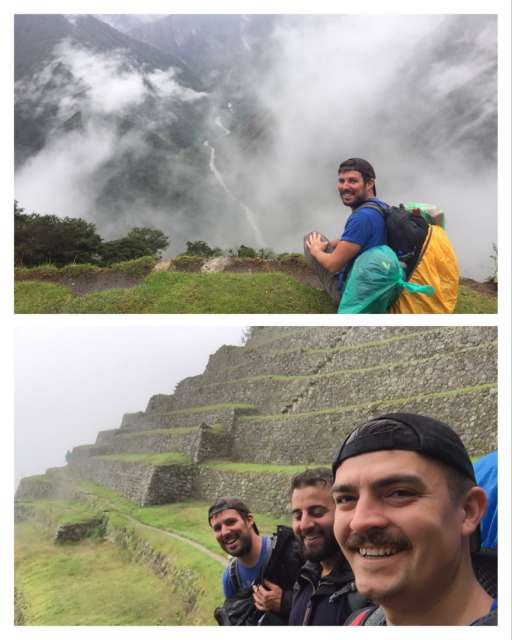
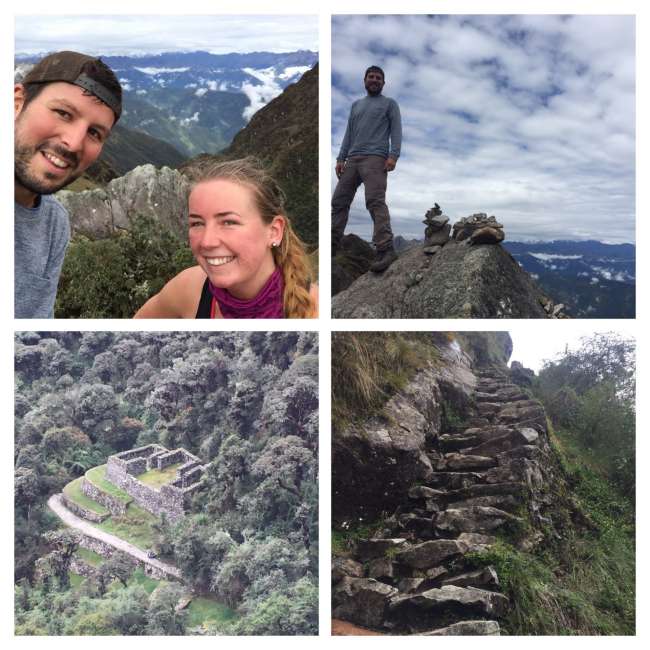
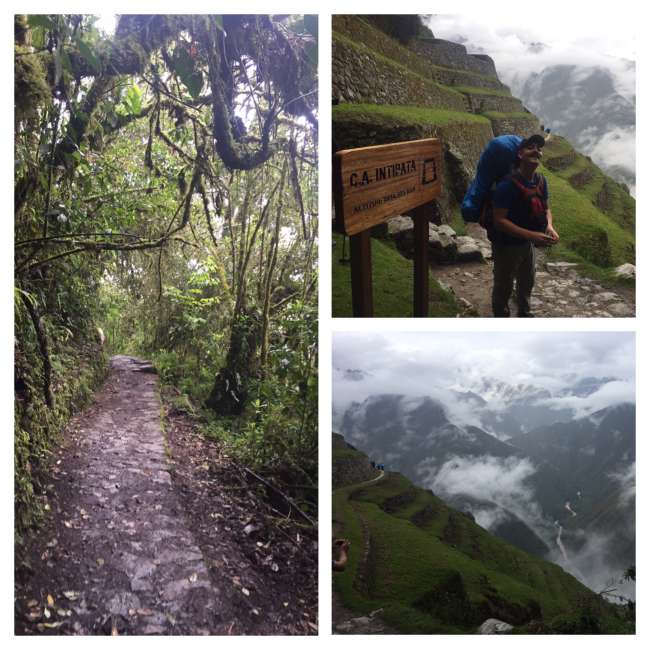
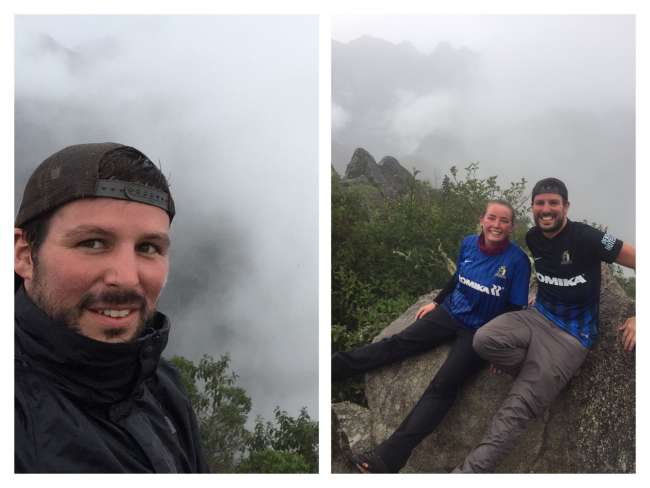
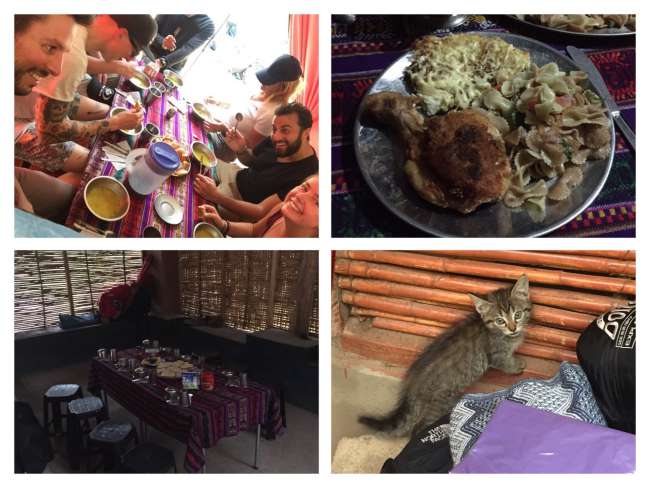
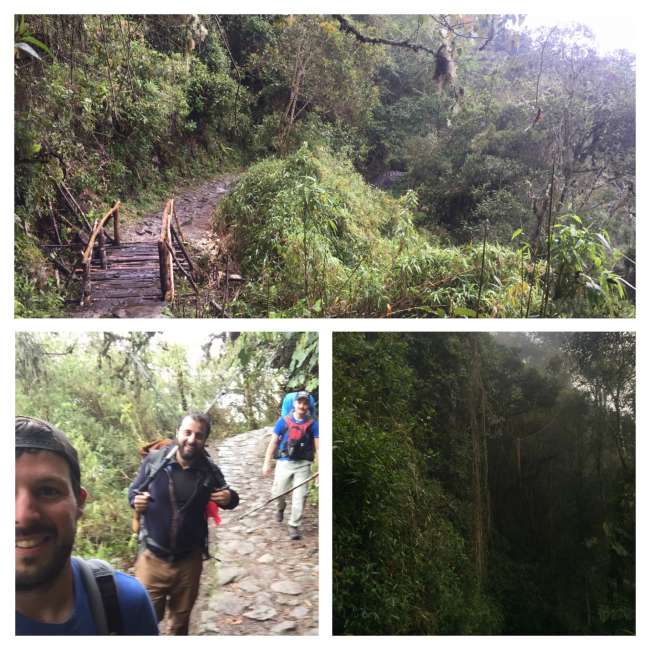
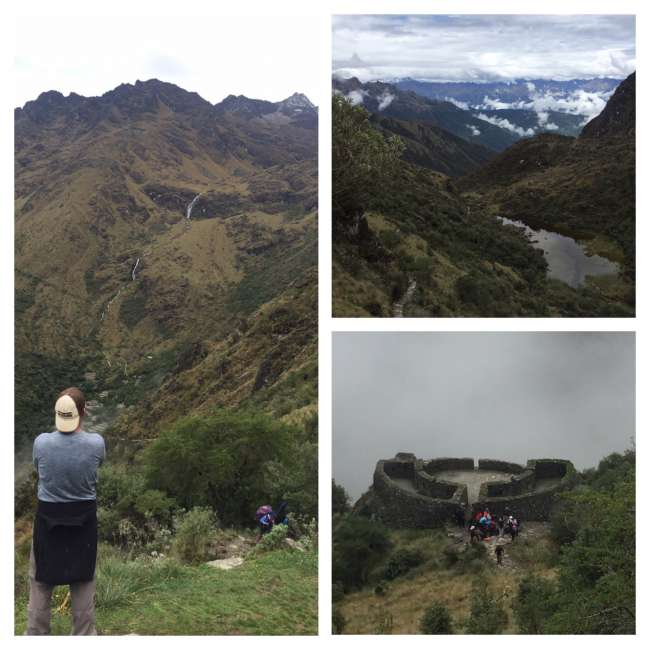
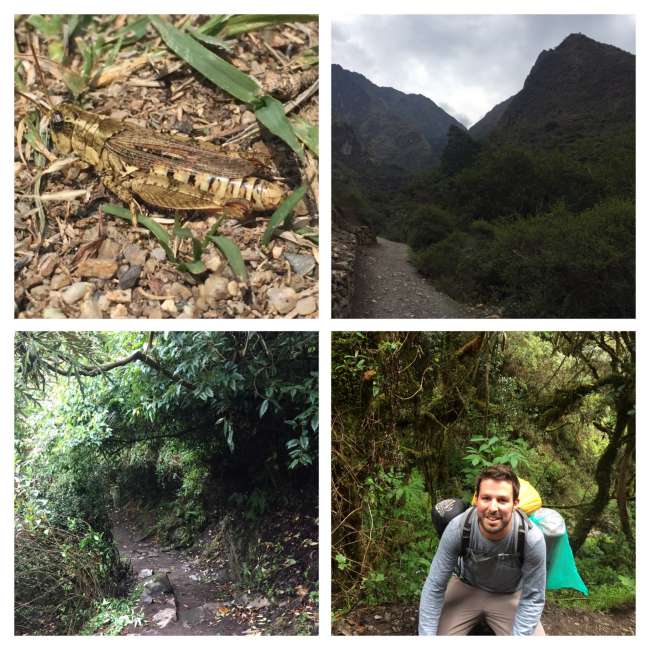
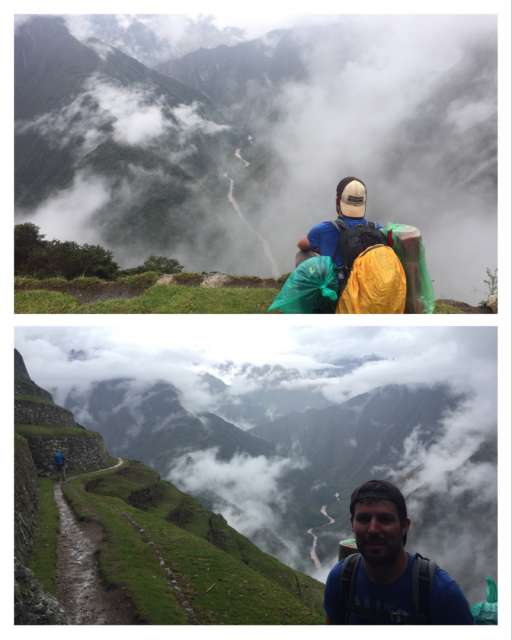
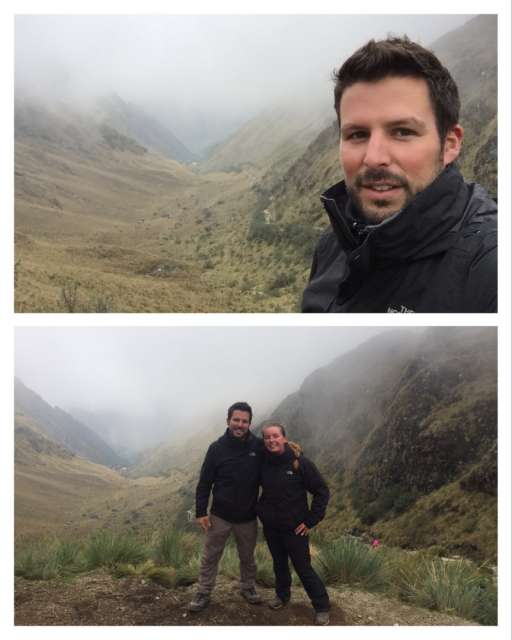
Абонирайте се за бюлетин
Machu Picchu was our next destination. In the language of the Incas, it means 'Old Peak'.
The Inca city has been a UNESCO World Heritage Site since 1983 and has been one of the New Seven Wonders of the World since 2007.
Machu Picchu was only discovered in 1911 by American scientist Hiram Bingham.
What the Inca city was used for is not really proven. There are many different theories, ranging from the last place of refuge, to a sacred convent for women, to a pilgrimage site for believers, to the private property of the Inca king.
Machu Picchu is located at 2430 m and is situated between the two mountain peaks 'Huayna Picchu' and 'Machu Picchu'.
The simple option of taking the transfer to Ollantaytambo and then taking the train to Aguas Calientes and hiking from there to Machu Picchu in one hour is not an option for us. This is the only option that can be done independently.
There are several other ways to get to Machu Picchu. What is very popular among backpackers is the 'Jungle Trek'. It can be booked for 3 or 4 nights. This is not a real trek, but more of an adventure tour with rafting, canyoning, zip-lining, and a little bit of hiking.
We had already agreed back home that only the true 'Inca Trail' would be an option for us. This trail starts at KM 82, which is just the position of the railway. This starting point is a little behind Ollantaytambo. The entire route covers 42 kilometers with a total of ...?!? meters of ascent and is completed in 4 days. Camping is of course done in tents, cut off from the outside world.
As the provider of this tour, we chose 'Loki Travel'. Loki is actually a large party hostel popular with backpackers, with locations in La Paz, Bolivia, Salta, Argentina, and Lima, Mancora, and Cusco in Peru.
In Cusco, there is also 'Loki Travel', a travel agency where you can book all kinds of tours.
We booked the 4-day tour from Germany. The prices of the various providers range from €300 to €700! It should be noted that extra items are usually charged separately.
These include trekking poles, sleeping bags, headlamps, and especially the porters.
Every group has porters. They carry the communal tent, our tents, and food for 4 days. In addition, you can book a 'Half-Porter' (7 kg) or a 'Full-Porter' (14 kg). This costs $55 or $110.
We decided to carry our own luggage. A trekking backpack plus a sleeping bag and a mattress, which is included in the price. My 26-liter backpack was almost too small for this. We saved on clothes. There should be enough space for sufficient water.
The price for us was $500. An extra we booked was the climb to one of the two mountains in Machu Picchu. The two mountains are called 'Huayna Picchu' and 'Machu Picchu'. From Huayna Picchu, you have a view of Mount 'Machu Picchu' and Machu Picchu itself. We decided to climb 'Huayna Picchu'.
But let's start at the beginning. In the evening before the start, there was a briefing at the Loki Hostel at 5:30 pm. Attendance was mandatory for everyone. Our group in the office of Loki Travel, located in the hostel, consisted of only 5 people. An American couple, he 64 and she 53, and a well-formed Dutch woman. Could be interesting.
Fortunately, our guide Hermo told us that there would be 3 more participants who would attend the briefing later. We learned many details, but hardly anything that we didn't already know from the extensive information we had received by email.
Within half an hour, it was all over. Normally, it only takes 20 minutes, but the American man named Gerry had the habit of asking exactly what our guide had just mentioned in the previous sentence.
Somehow we agreed that he must be the typical Trump voter! Always these prejudices...
Once again, the alarm clock rang early because we were supposed to be picked up at 5 am. Of course, South American time. In the end, it was actually 5:35 am.
We were the last ones to board the minibus. The porters were already on the bus, as were the American couple we had met the night before and the Dutch woman. Also on the bus was Martin, a Canadian, who was an unknown but immediately very likeable guy.
Two more people were supposed to join the group later.
We drove for 2 hours to Ollantaytambo, a small town that is the starting point for all trips to Machu Picchu. Here we had 45 minutes to have breakfast or get any missing items.
We then continued to the aforementioned 'KM 82'. We were amazed at the huge bags the porters were preparing here. Only our friends from the United States had decided to use a 'Full-Porter', with an extra 14 kg for the already heavily laden carriers. It was typical that their backpacks, which they carried in addition, almost had the same weight.
These really small men carried up to 25 kg on their backs. Day after day, week after week,...
In the heat here at 2600 m, we generously applied sunscreen and mosquito repellent. Both were absolutely necessary.
After a few meters, we passed the official entrance to the 'Camino de Inca' exactly at 10 am. Our tickets were checked against our IDs.


Then it slowly started.
The first day was the easiest and led slightly uphill to about 3000 m. But after less than a kilometer, our Dutch woman was already struggling. Even our guide Hermo was amazed. At some point, we were told to continue. But when we eventually wanted to wait for the group but realized that no one was coming anymore, we knew that she had abandoned the tour.
Eventually, our guide finally arrived and reported that in his more than 400 guided tours, it had never happened before that someone had to turn back on the first day.
For us, the journey continued together. These delays allowed the other two participants, Milosz, a German, and Aman, a Pole who lives in the United States, to catch up. They had mistaken the date and only arrived in Cusco that morning. They took a taxi and drove to KM 82 and followed us from there.
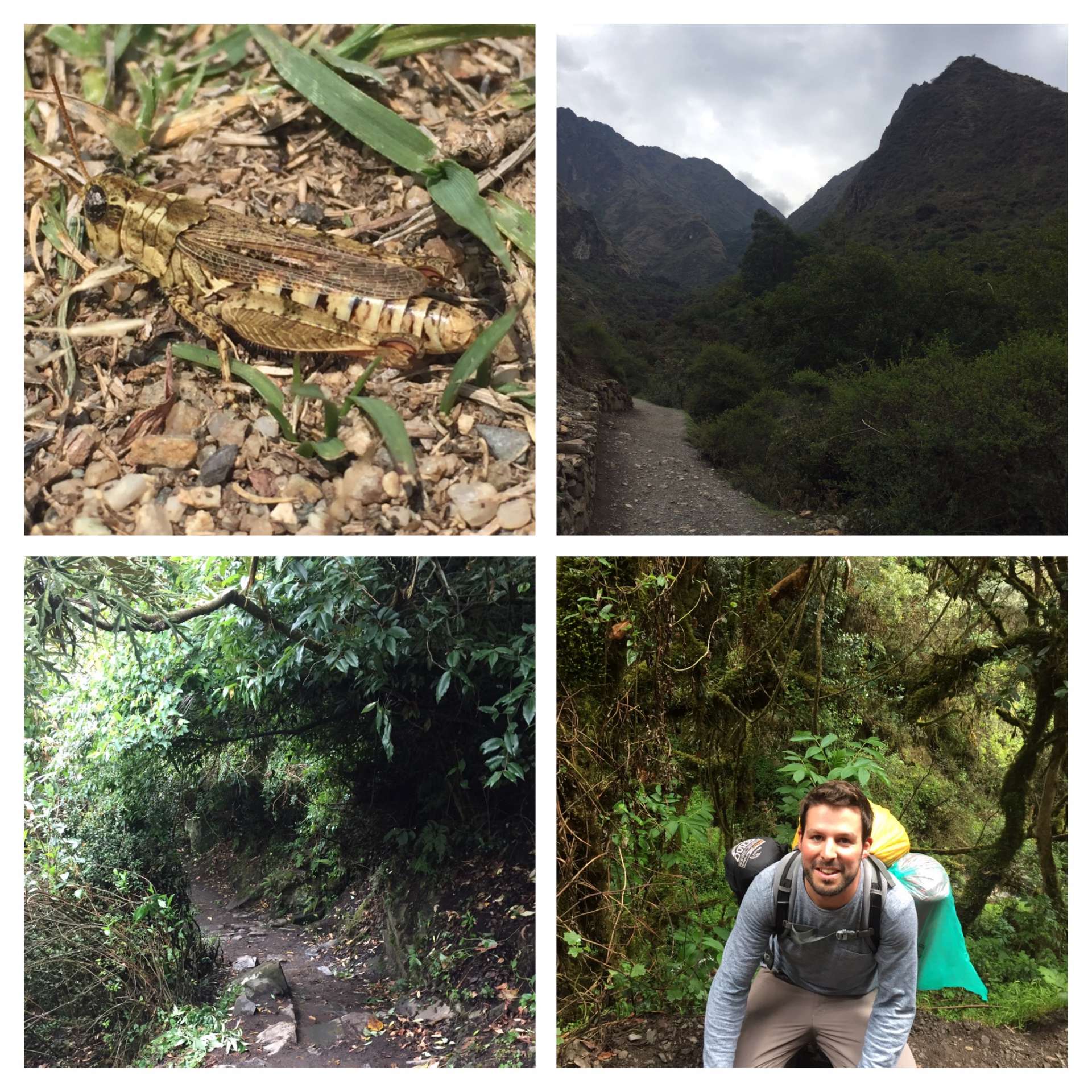
So our group was complete. We saw the first Inca ruins from above after overcoming an initial steep section. The paths here were very good. There were hardly any stones or rocks in the way.
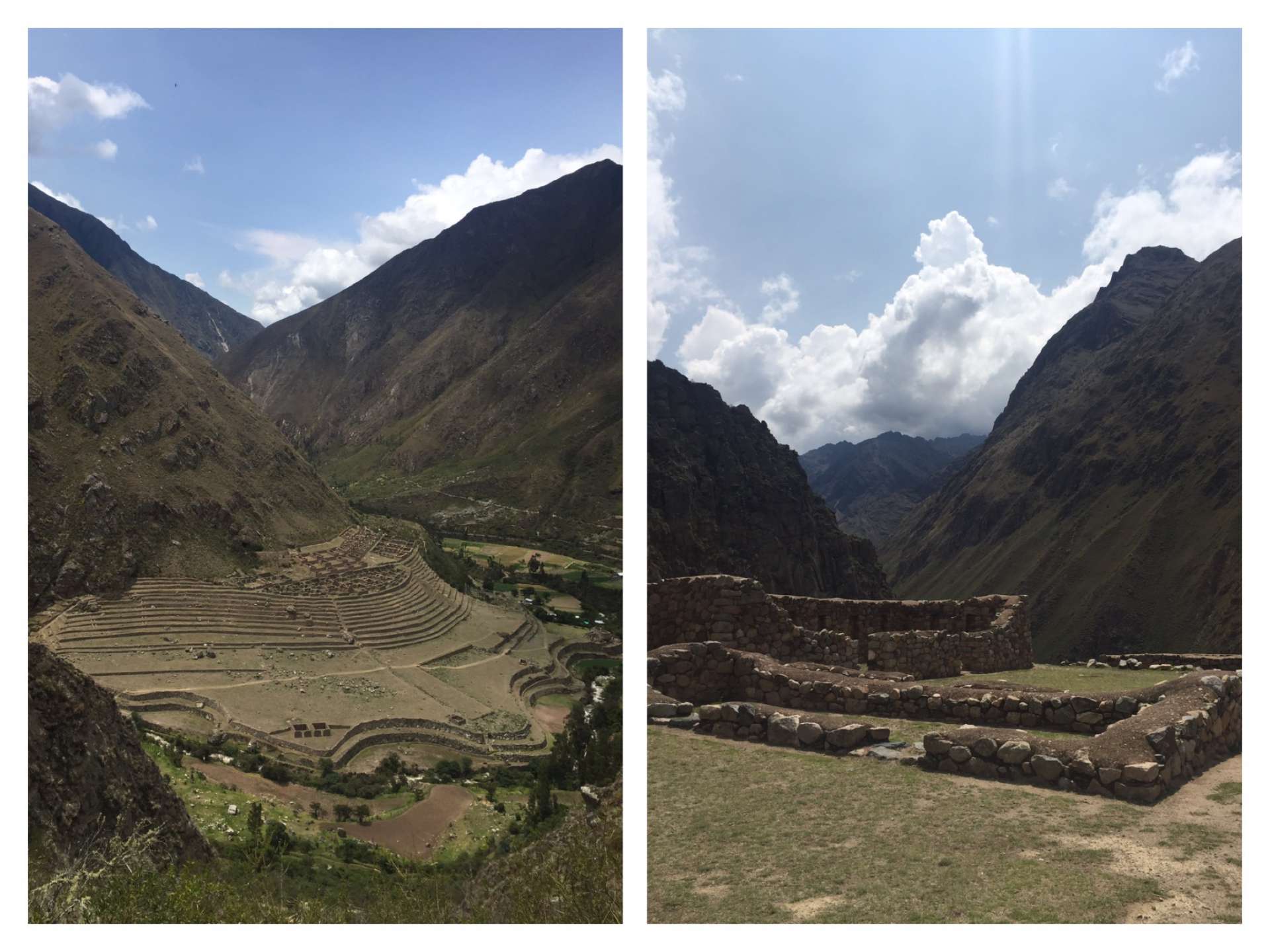
We stopped for lunch for the first time around noon. In total, we only hiked about 4 hours to get there.
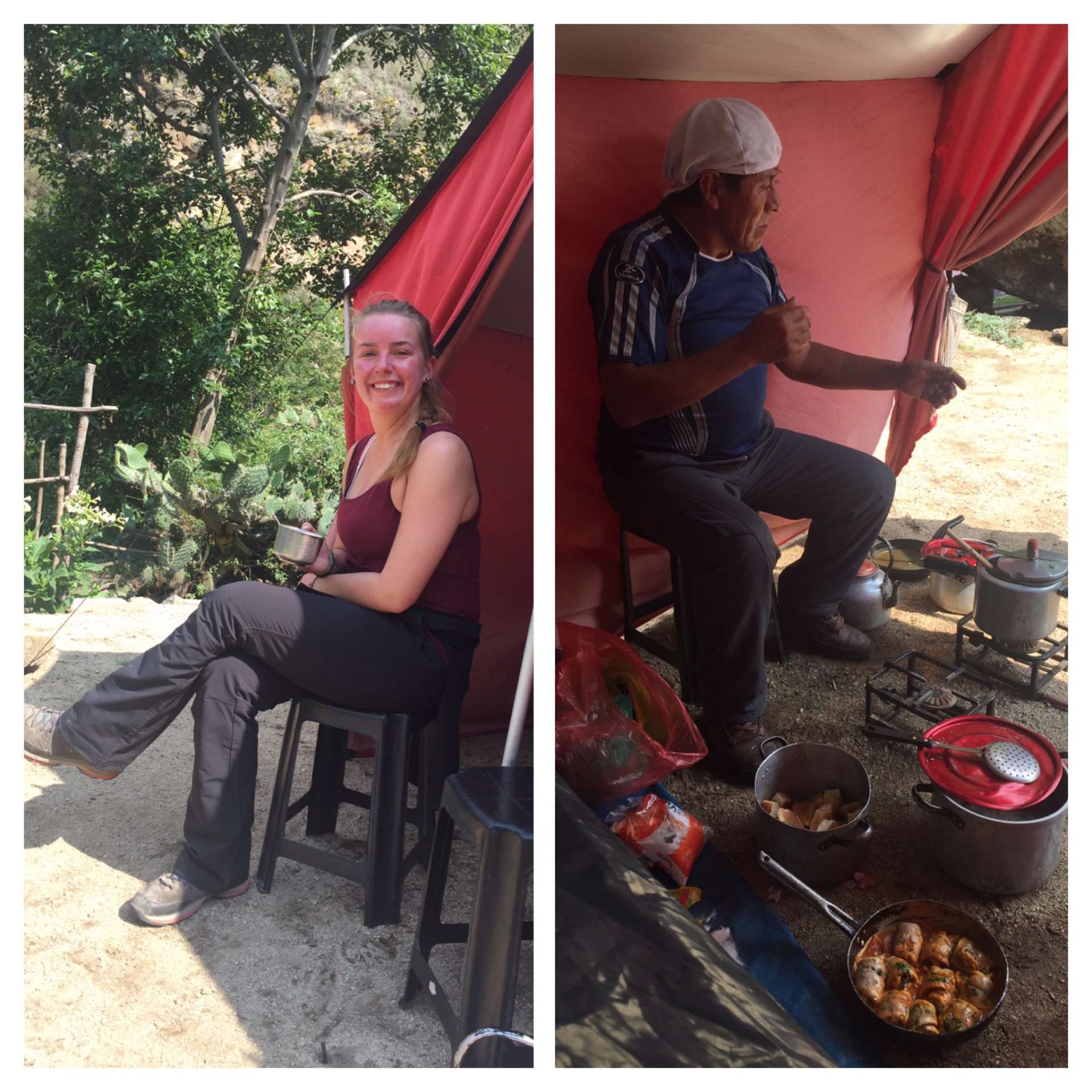
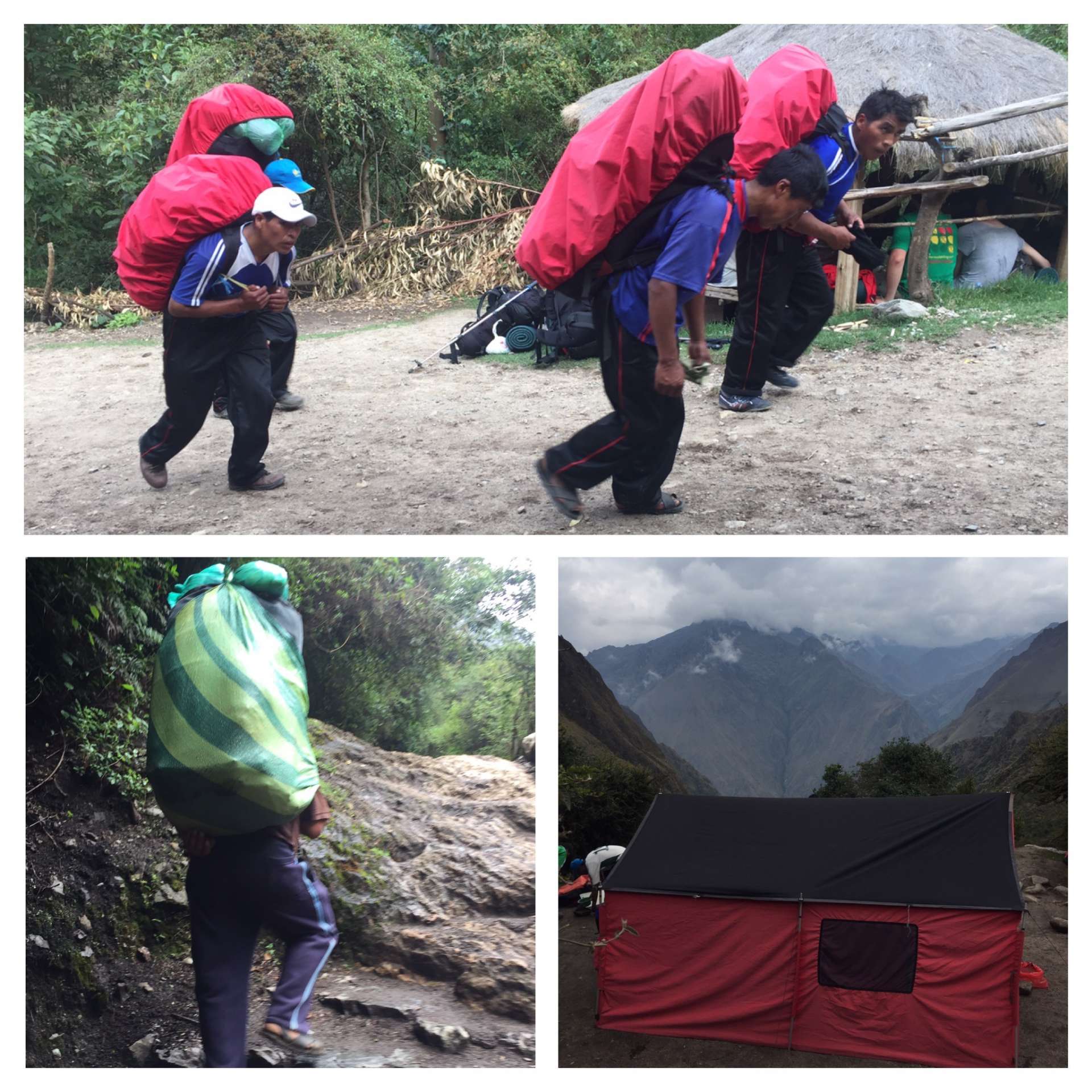
Then we continued for another hour before reaching our first camp at around 3000 m at 4 pm. Mosquito repellent was necessary here, as it was teeming with these little creatures in the tropical climate.
There was a small covered building where we had our coca tea, popcorn, cookies, and coffee. This was served every day after we arrived at the camp. Shortly after, dinner was served. First, a small starter, then a soup, a elaborate main course, and a dessert. It was incredible how our cook conjured up an elaborate meal with limited resources.

Afterwards, we watched hundreds of lightning strikes as a thunderstorm approached. When it started pouring rain, we retreated to our tent, which luckily was supposed to be waterproof. Our lights (cell phones and flashlights) went out at 8:30 pm, and we went to sleep.
It rained almost the entire night, but I didn't really care because I didn't notice much of it. In the morning, our porters woke us up by bringing coca tea to our tent.
In this camp, it was still possible to stock up on water and snacks, and apart from showers, there were also normal sanitary facilities available.
We had a hearty breakfast because the hardest day of the tour awaited us! We were going to climb up to 4215 m. We would have to conquer the 'Death Woman's Pass'. In Quechua, the language of the Incas, it is called 'Warmiwañuska'!
We started at 7 am. It was a steady uphill climb. We crossed jungle-like terrain. We passed numerous waterfalls and bridges. But what we had to overcome almost continuously were steps made of heavy rocks. Sometimes larger, sometimes smaller, so low or high steps. It got steeper and rockier from kilometer to kilometer. In addition, the summit was shrouded in clouds.

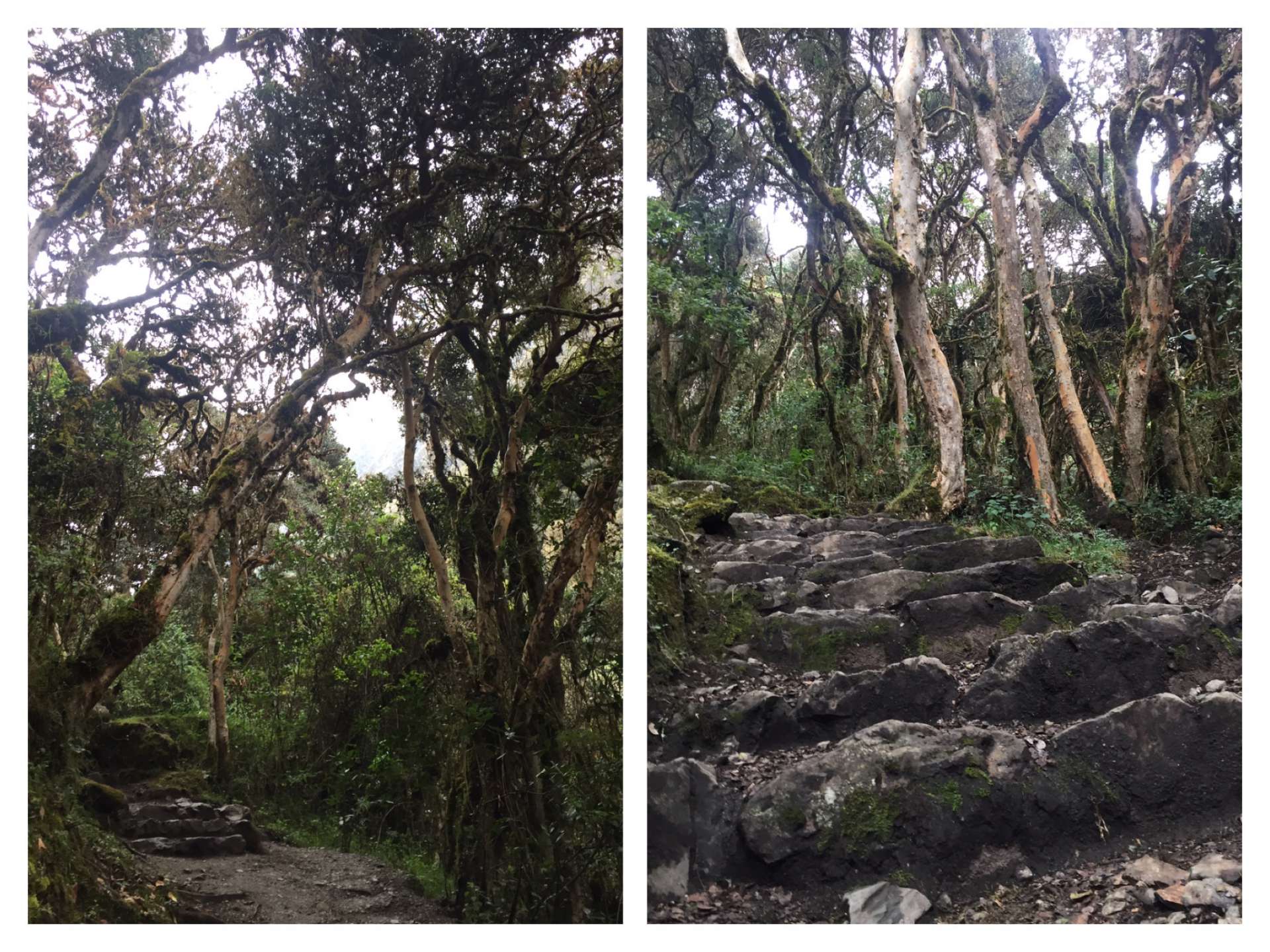
After 2.5 hours, we took a break. The porters had set up a tent where we had lunch. Everyone had hiked at their own pace, so the intervals at which we reached the camp were very large. It took almost 1.5 hours for the last person to reach the camp. When we wanted to wait for the group at some point and realized that no one was coming, we knew that she had abandoned the tour.
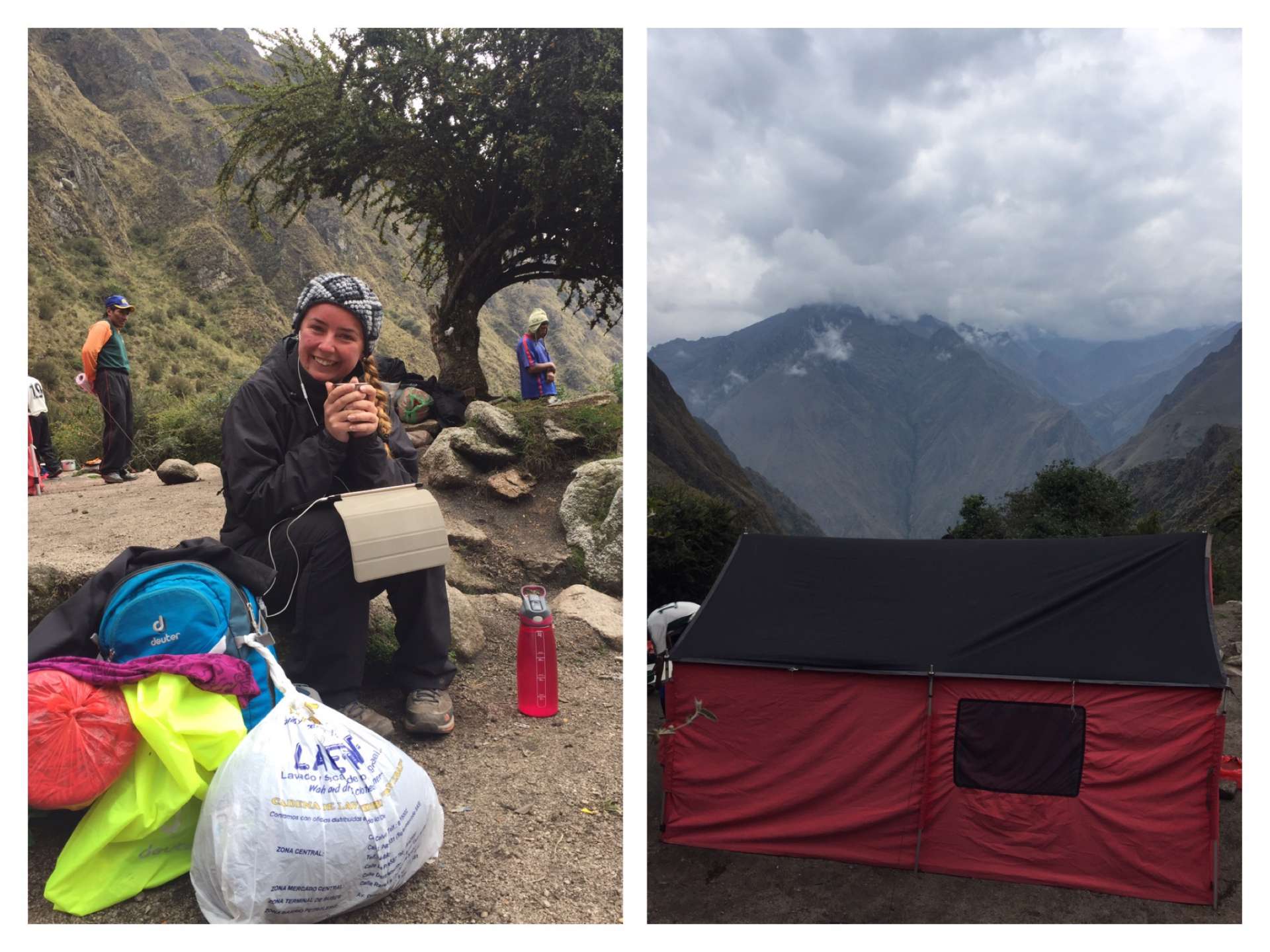
I had used the time to rest a little. Others, like the two latecomers Milosz, Aman, and the Canadian Martin, did yoga during that time.
Refreshed, we continued to the final stretch until we reached the summit. We climbed the Warmiwañuska without a break in 55 minutes. The air was thin at the top, and I was relieved when I had overcome the last few meters and reached the highest point of the 4 days. It was quite airy up there.
Eva was not far behind me. So we took a few photos at the top and started going down.
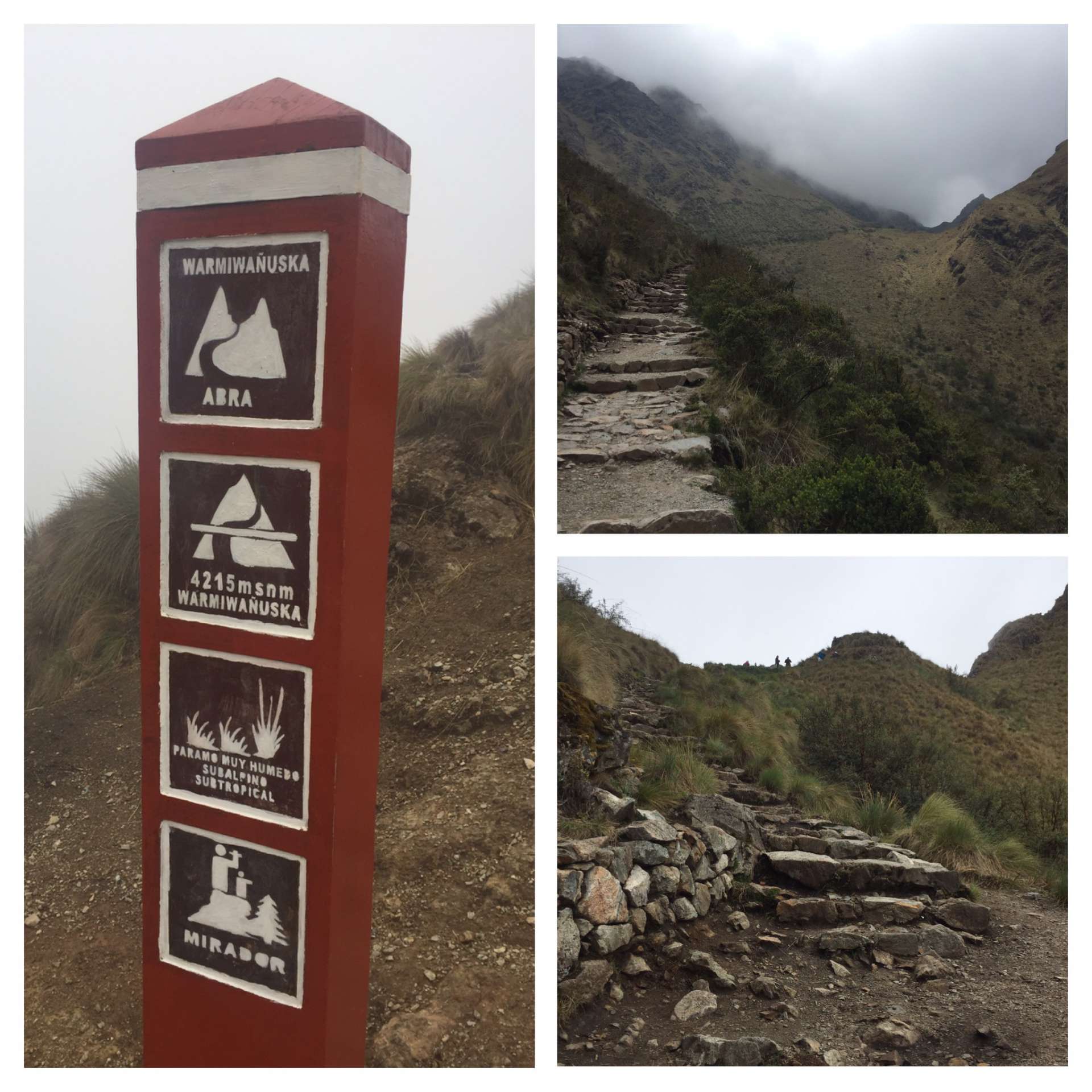
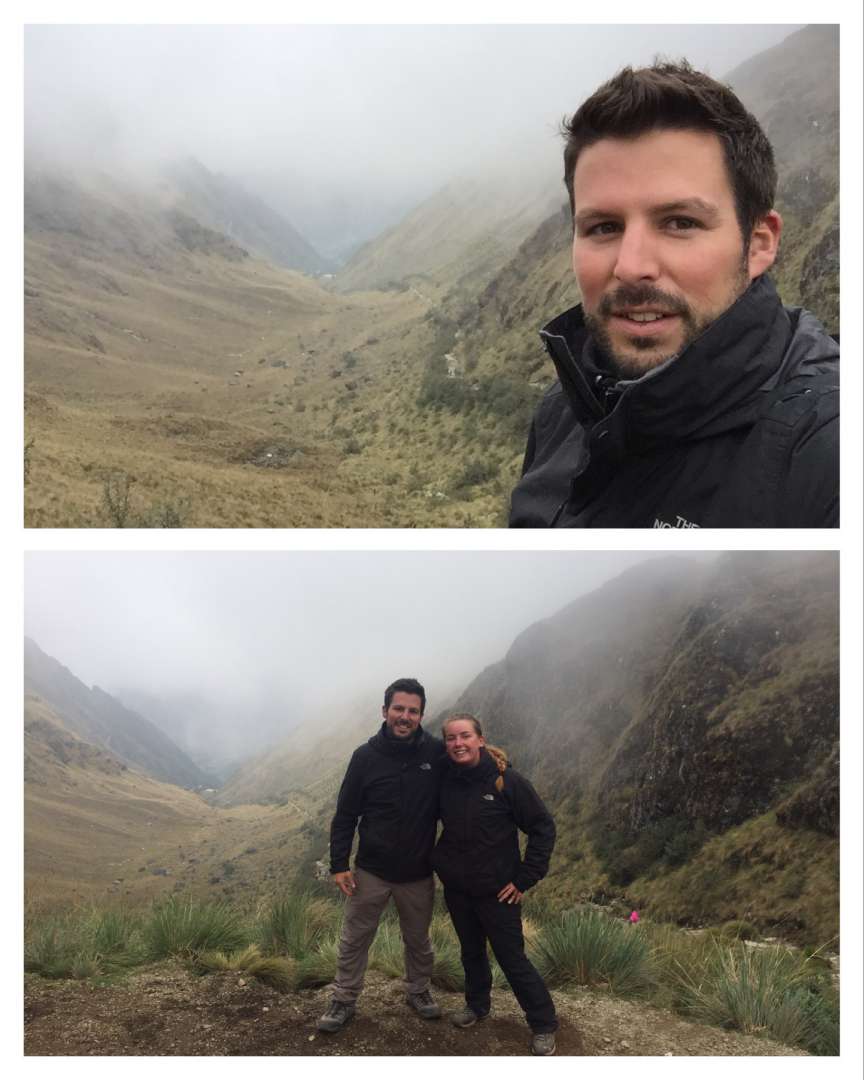
The porters had already packed up the lunch camp and caught up with us on the steep ascent with their heavy bags.
That morning, we had covered 1200 meters of ascent over a distance of 8 kilometers.
We then had to descend 900 m over 4 kilometers to 3300 m. These 4 kilometers were covered at a hellish pace. Milosz, with his long legs, sped ahead. He focused more on being the first to arrive at the bottom than on enjoying the scenery.
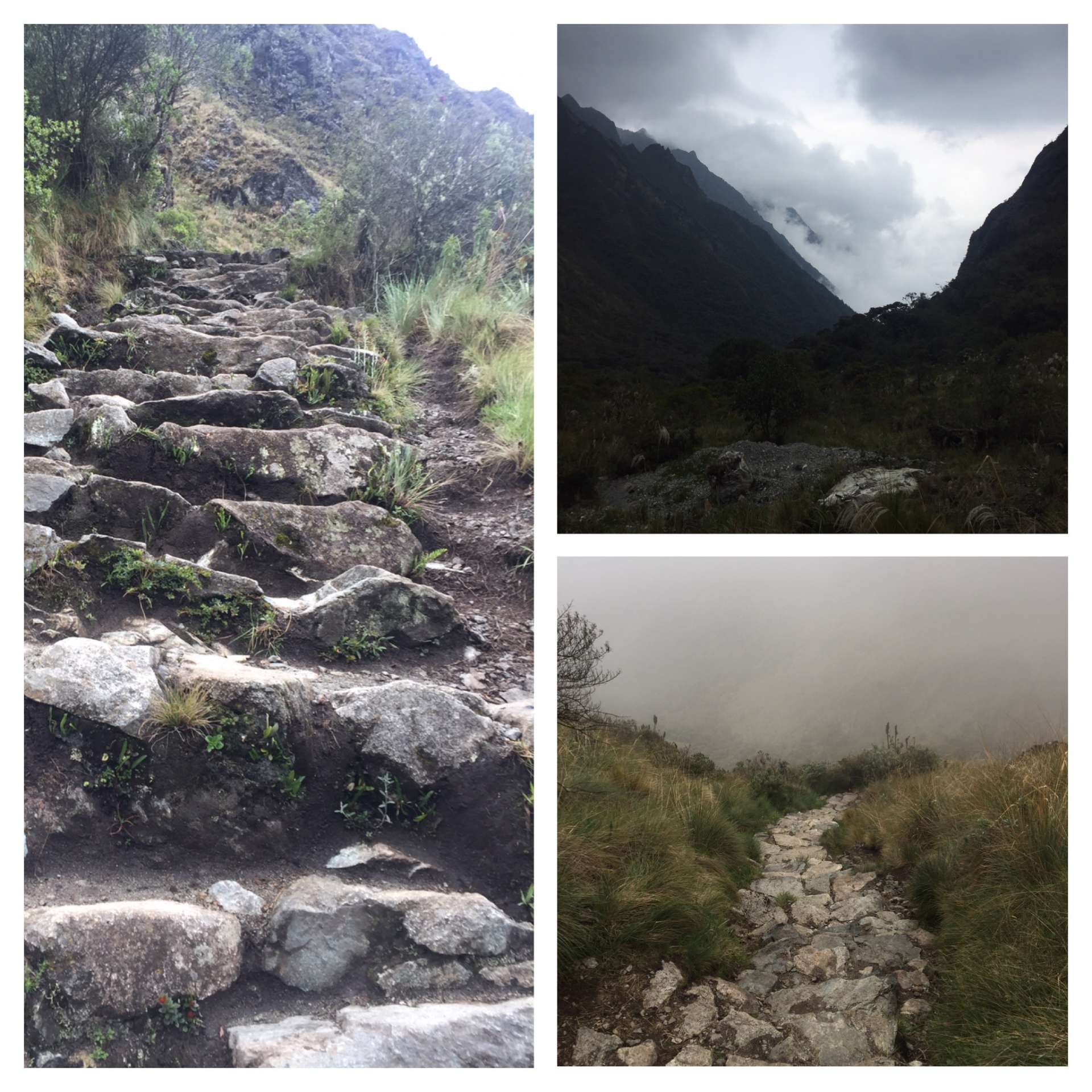
We arrived at our last camp at around 2:45 pm after a long day of hiking. The porters had already set up almost everything again.
The good thing was that as one of the first, you could choose your campsite. There was a leak in one of the tents, though.
In this camp, there were no proper toilets anymore. There were only squat toilets and a shower that only produced water from the river. Ice-cold, of course. Sometimes a piece of soap, a little water, and a washcloth will do.
The program for the rest of the day was the same as the previous day. First, there were snacks, then dinner, tea, and then the rain started again, so we went to bed early. The lights went out at 8:30 pm. Good night!
The third day was the longest in terms of distance. It was 16 kilometers. We had to conquer two peaks again. The first one was scheduled as morning exercise directly at the start at 7 am.
It was an ascent that was tough again. Halfway up, at 3720 m, there was a larger, well-preserved ruin called 'Runkurakay'. It was a rest and supply point strategically located.

After Hermo told us in his perfect English about the ruin and the Incas, we continued. A few meters later, you could get a good view of 'Runkurakay', where you could recognize its shape.
After a total of 1.5 hours, we reached the second pass of the trail at 3920 m. Once at the top, you could climb a small hill from where you had an even better view of the surrounding mountains. A great spot for photos.
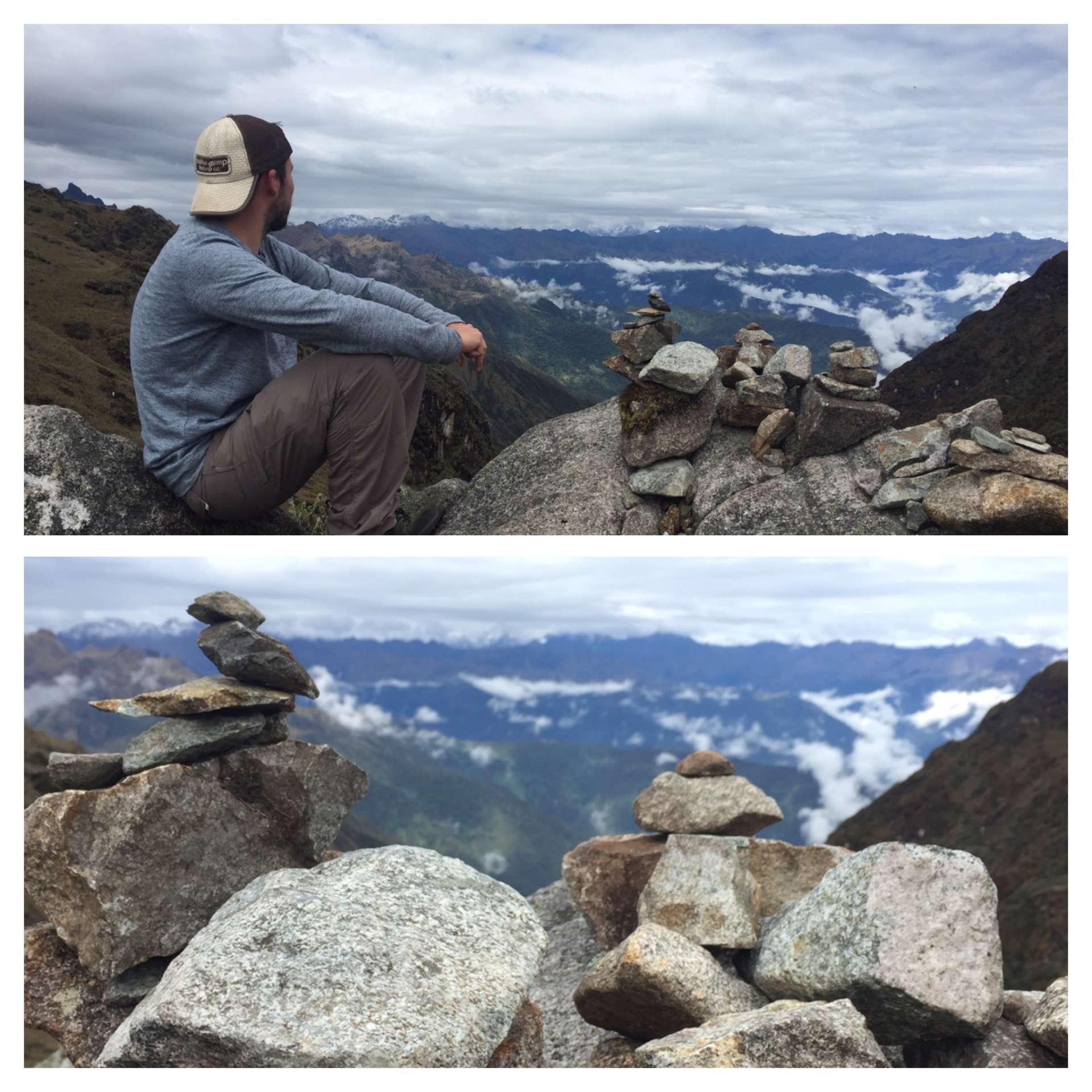

At some point, when everyone had reached the top, we continued downhill to the next destination. This time it was the impressive ruin 'Sayaqmarka' located at 3625 m. Hermo told us a lot about the construction. For example, he talked about the well-thought-out canals that distributed water throughout the entire Inca village in the simplest way. Those Incas were smart.
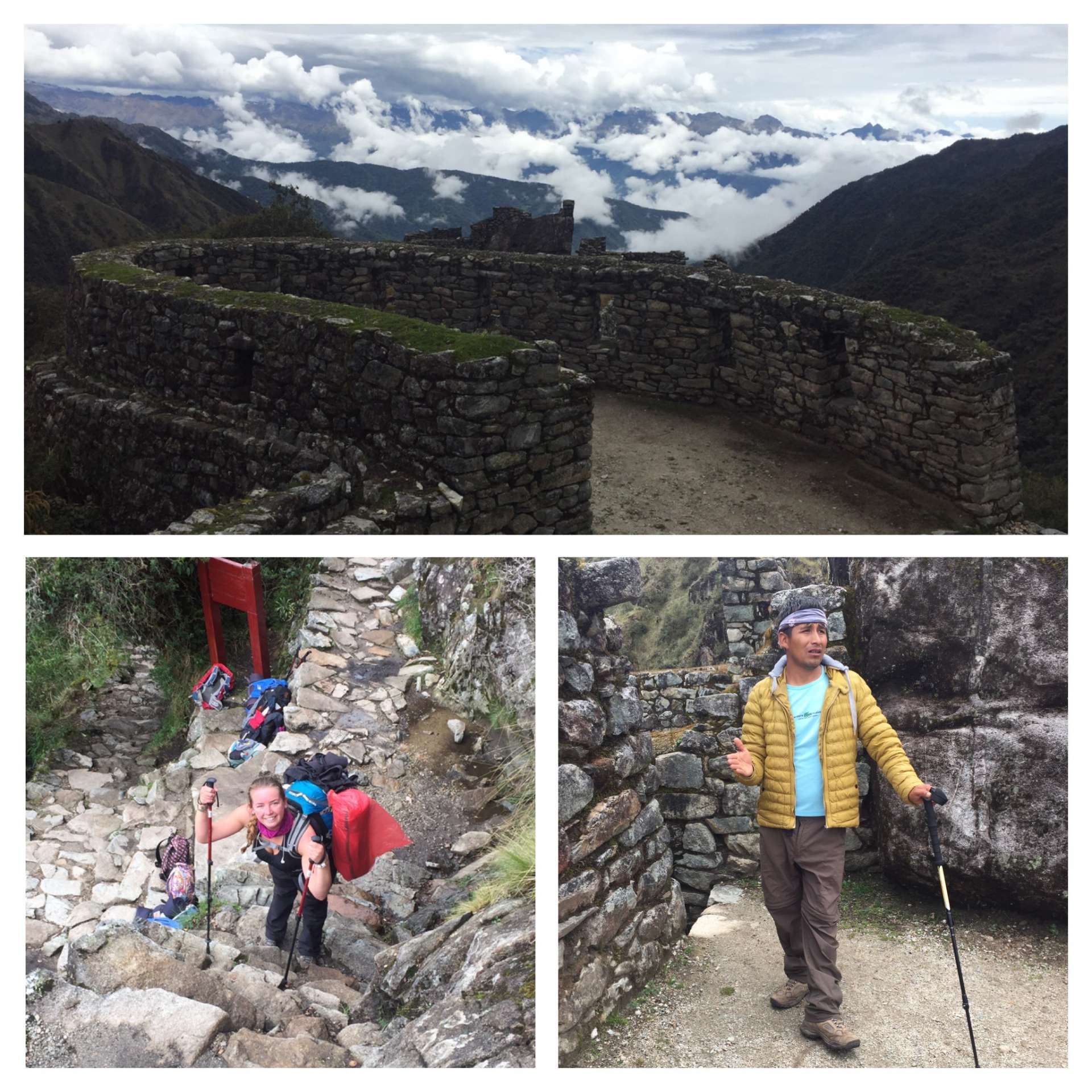
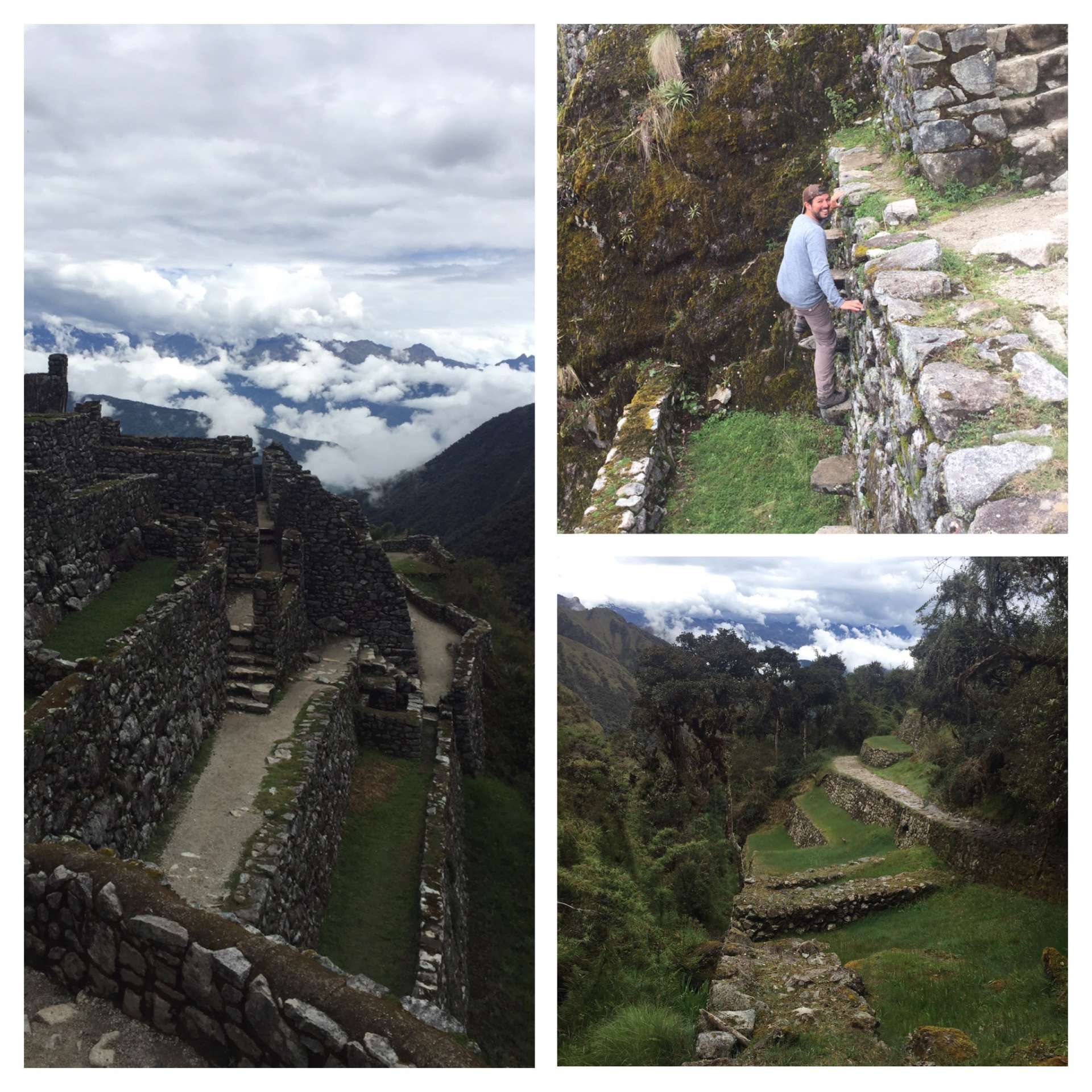

And because it was so beautiful, we went uphill again and then uphill again to the next summit - 'Phuyupatamarka' located at 3650 m. The path there was incredibly beautiful. Since I let the first members of the group pass me, including Eva, but the rest of the group was too slow for me, I encountered no one on this long stretch. I had the 'jungle' all to myself. Pretty cool to hike through nature like this. Every now and then, a butterfly fluttered past. I also went through a tunnel that looked like a cave. The day had been very cloudy so far, but here the sun finally came out at the right time. Perfect.
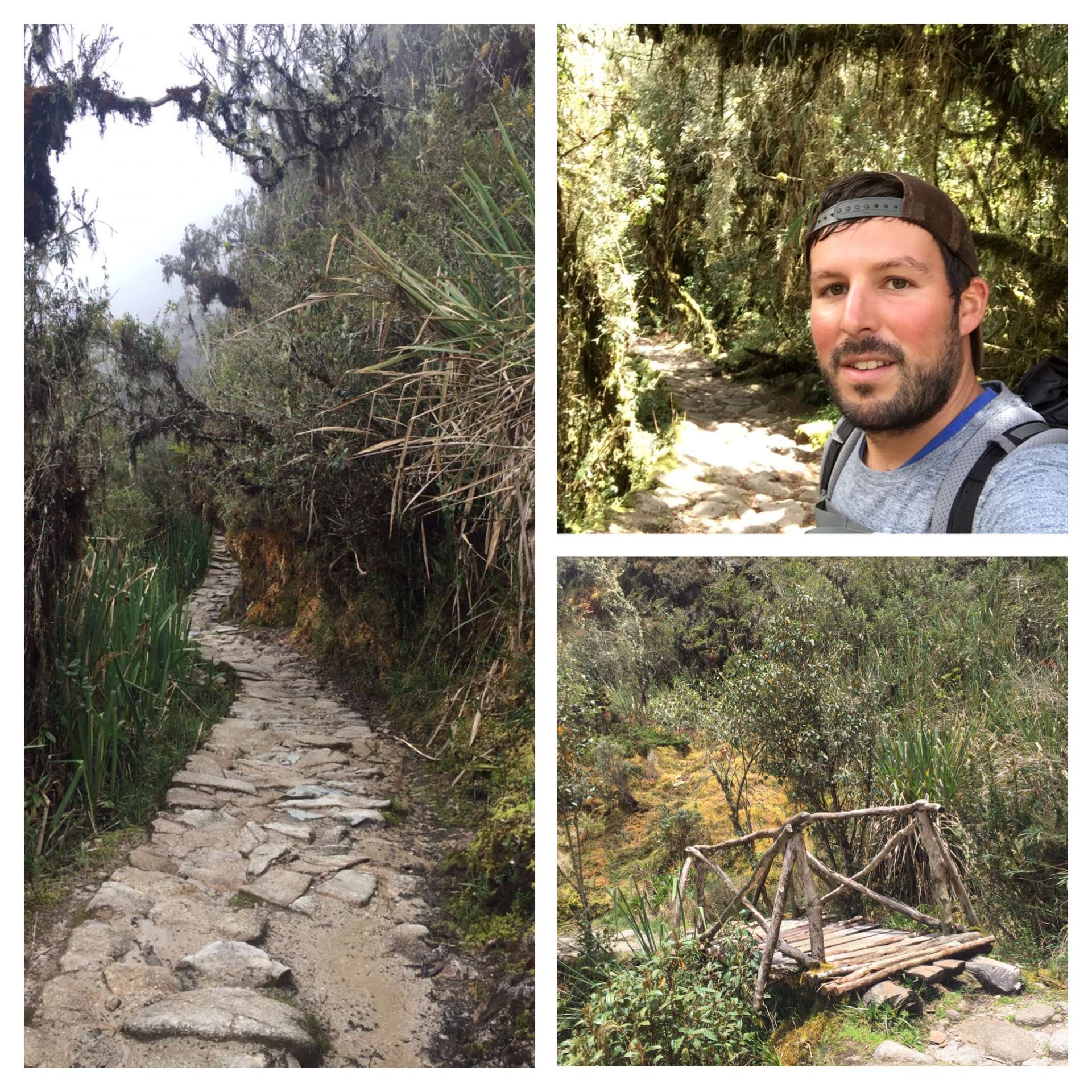
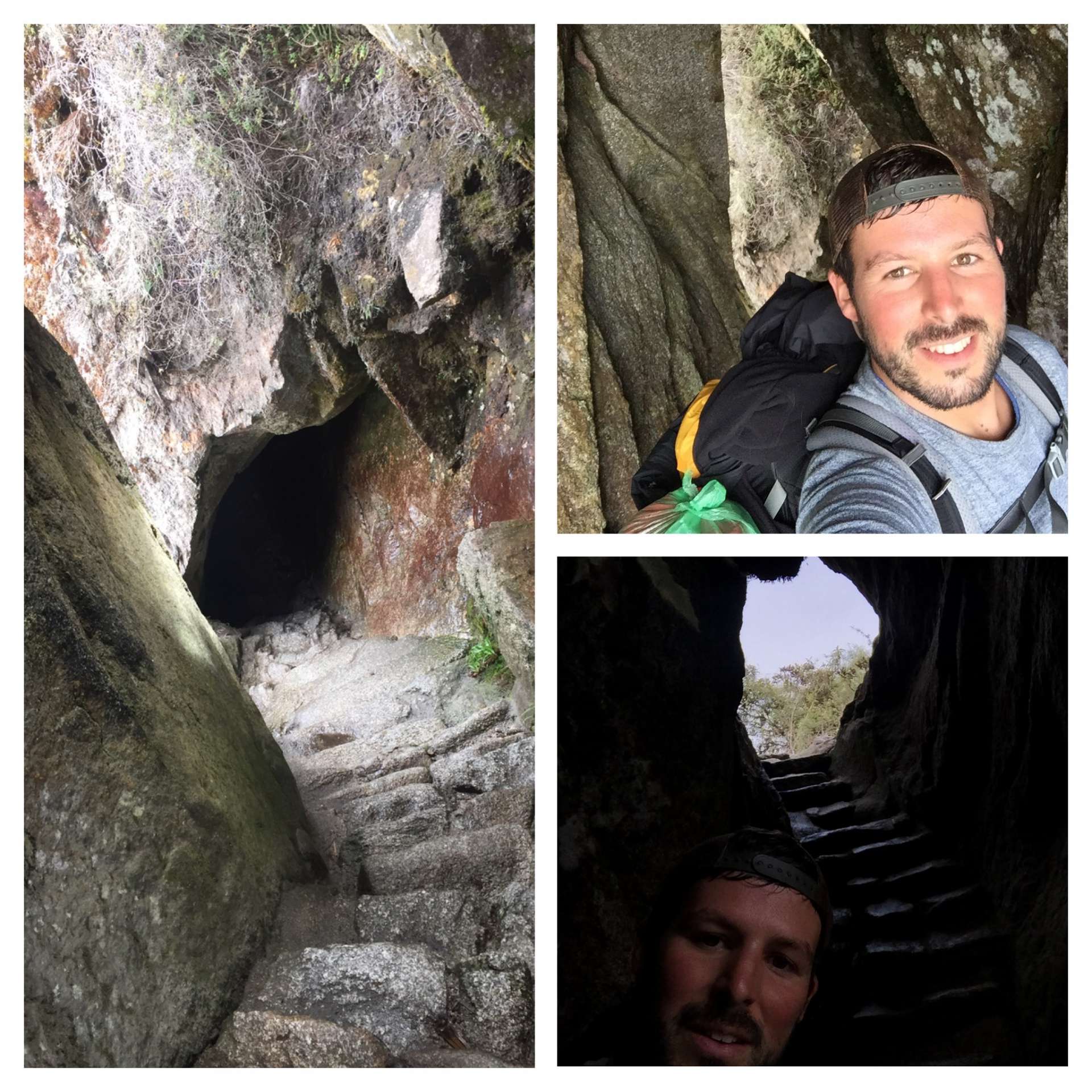
After almost 2 hours of uphill hiking, I arrived at 3650 m, where Eva and a set up tent were waiting for me.
At the summit, we realized that we were slowly approaching civilization again because for the first time in three days, our phones vibrated at the top.
Eva and I had eagerly awaited the result from Trier. A rejection! Well... at least we didn't lose, for once. It's sad to watch what's going on there at the moment from a distance. And then these two characters are reelected. Probably even when they're 80...
Well, that's beside the point! Back to the more beautiful things in life.
Although there was a little disappointment up here. We had been looking forward to reaching the summit to catch the first glimpse of Machu Picchu.
But apart from clouds, there wasn't much to see. Occasionally, we could see the 'Machu Picchu Mountain' between the clouds.
After lunch, we waited to see if the clouds might clear up, but they didn't.
Now we had to go downhill again. It was an endless descent. Negatively influenced by the heavy rain that had started. Our rain jackets were put to the test here. The problem was that it was still damn hot despite the rain. That's why the clothing under the jacket was changed frequently, always trying to keep the clothes dry. Rain ponchos were also used.
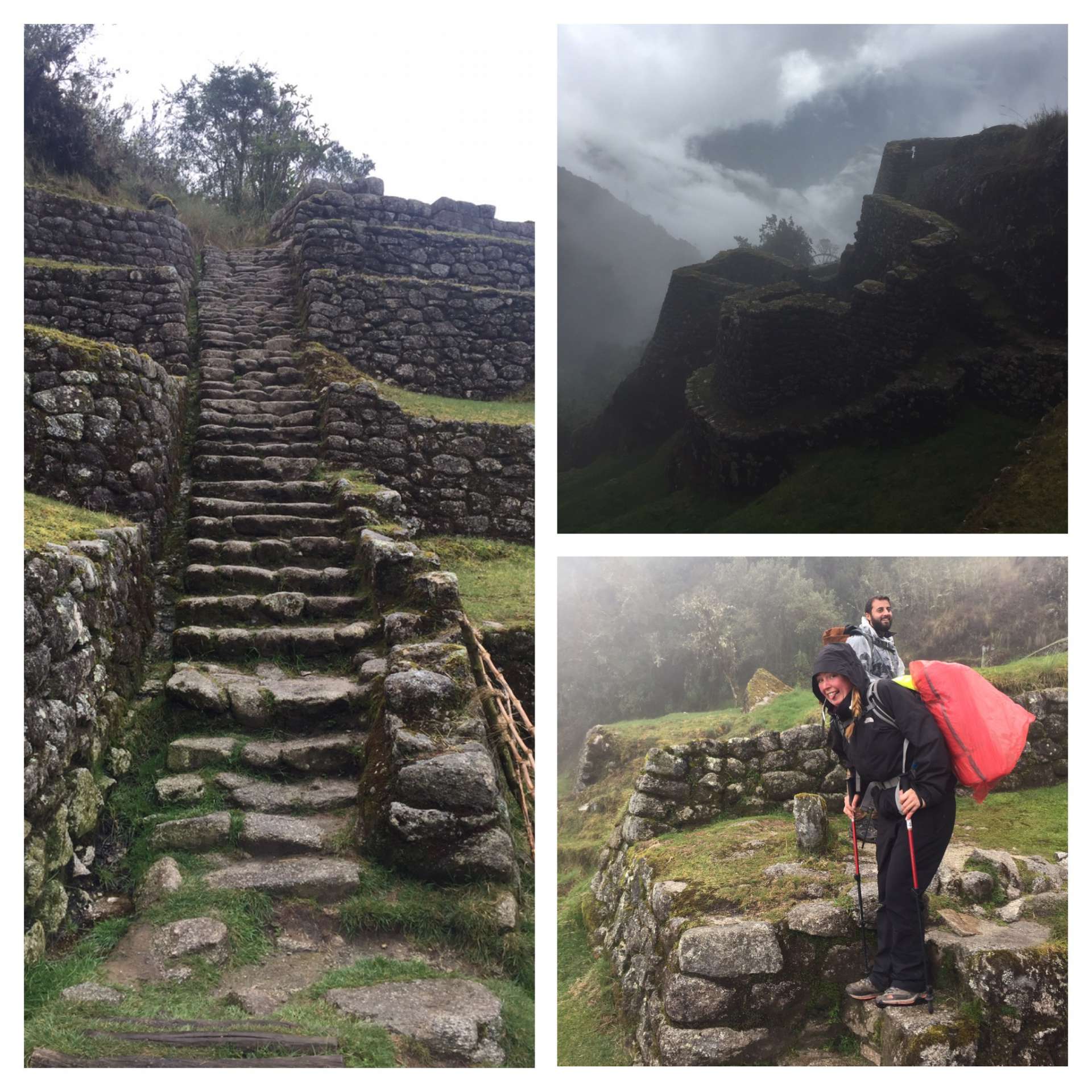

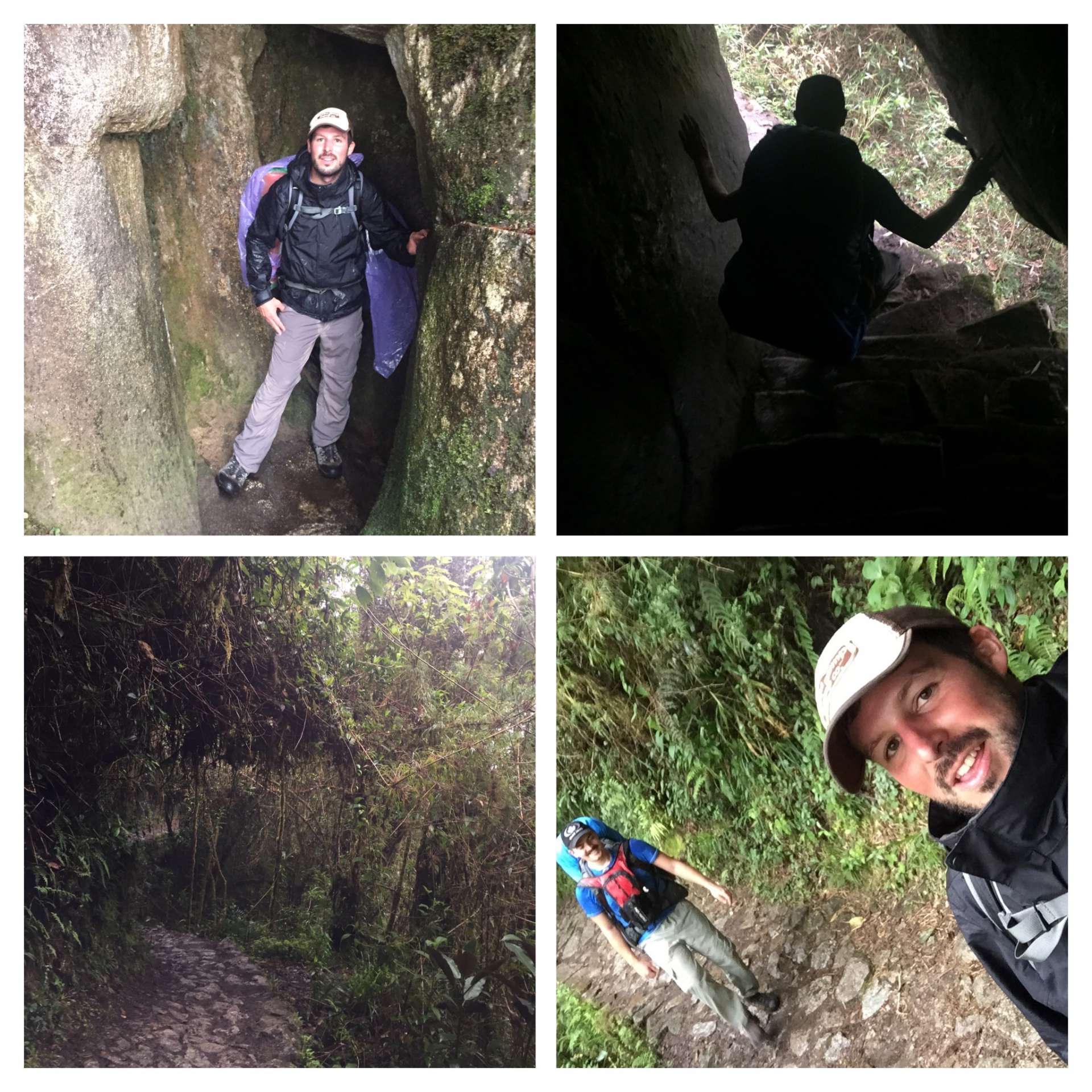
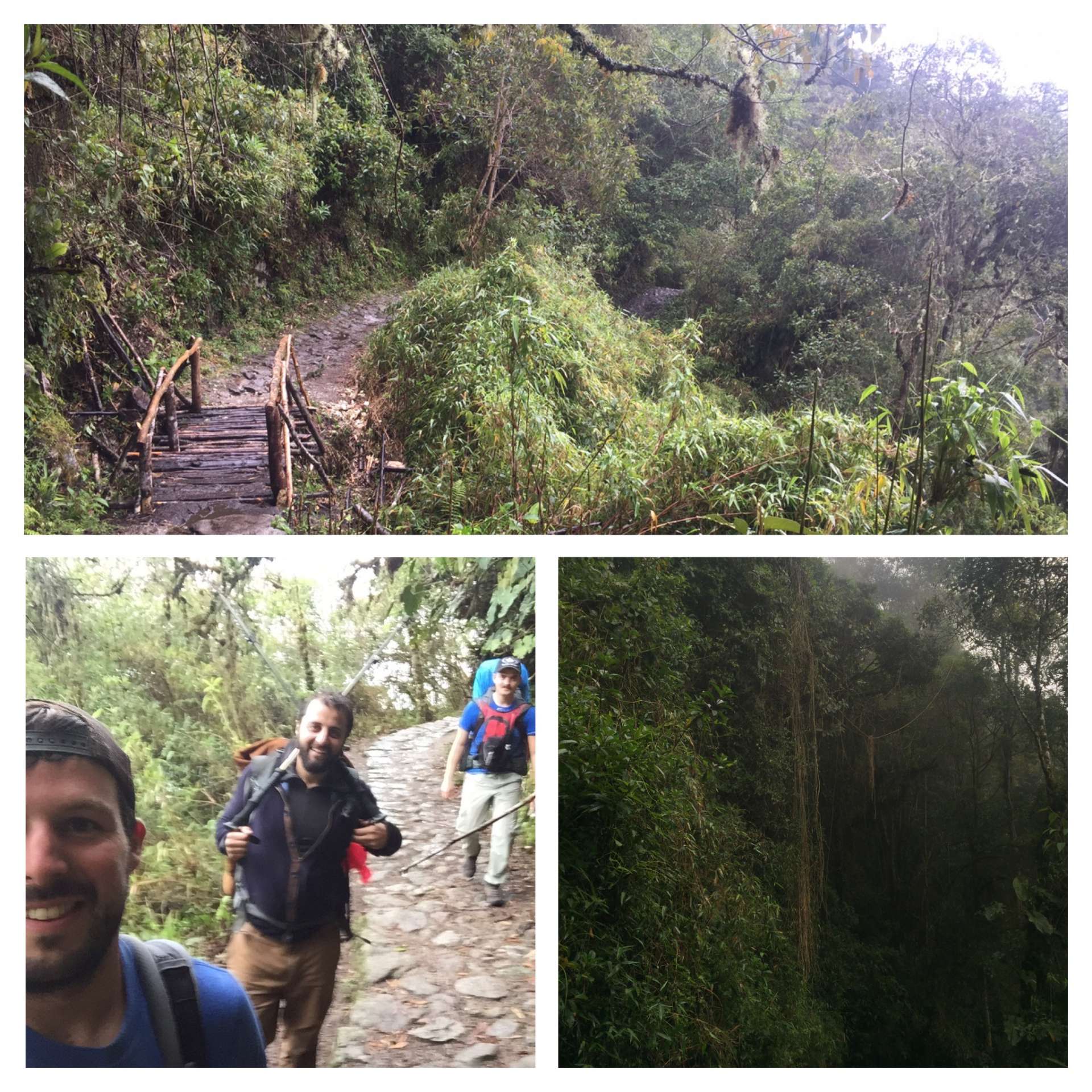
We also had to be careful where we stepped because the continuous rain made the ground very slippery.
Just before reaching the camp, we could choose between taking the direct route to the camp or taking a left turn.
This path led to a hidden ruin that resembled terraces.
Aman, Martin, and I agreed that we had to visit the ruin 'Intipata' at 2896 m.
The detour was absolutely worth it. Especially because there were numerous llamas and alpacas in the ruin or on the 'terraces'. Taking a llama selfie has something special. ;-)
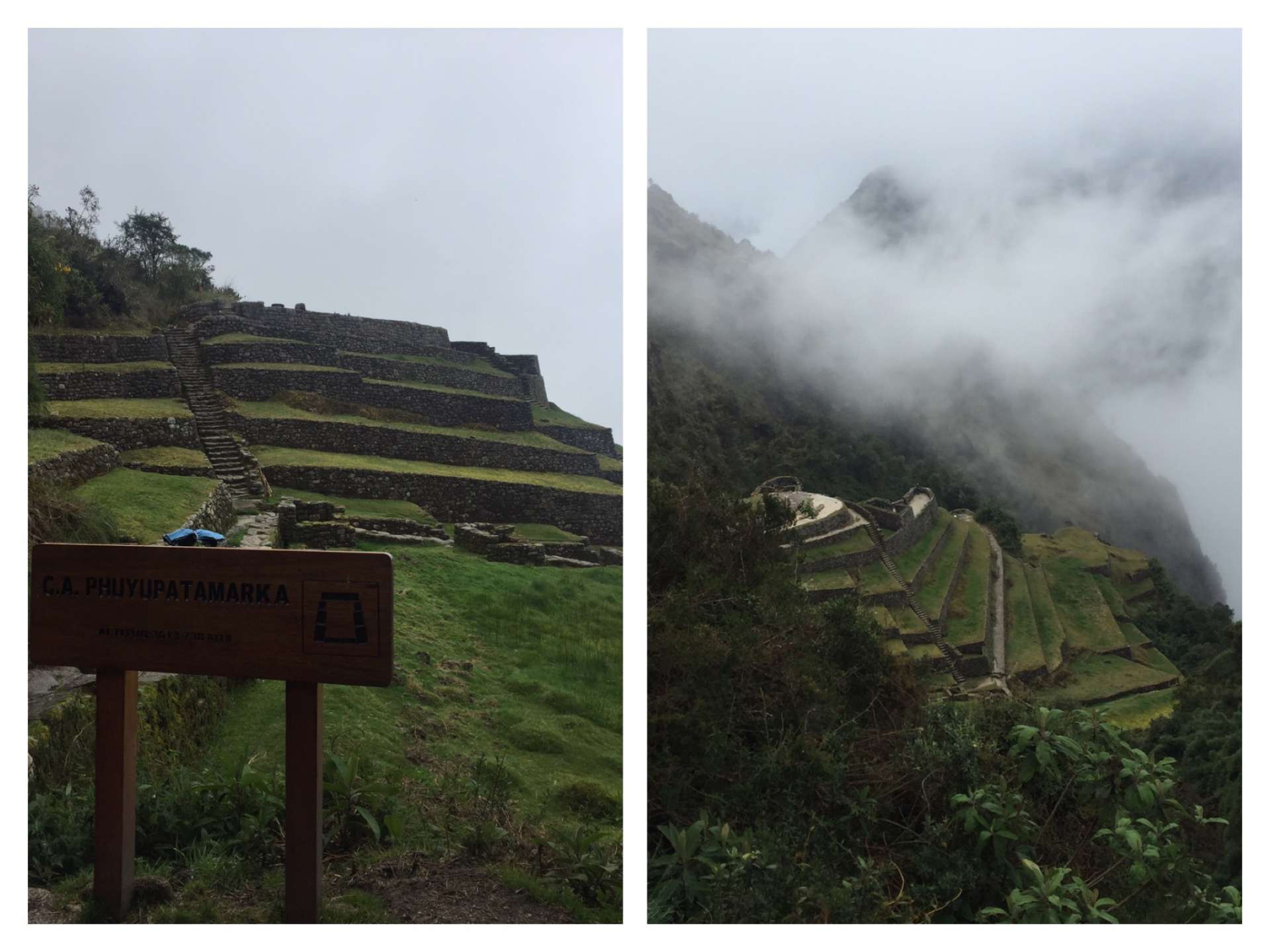



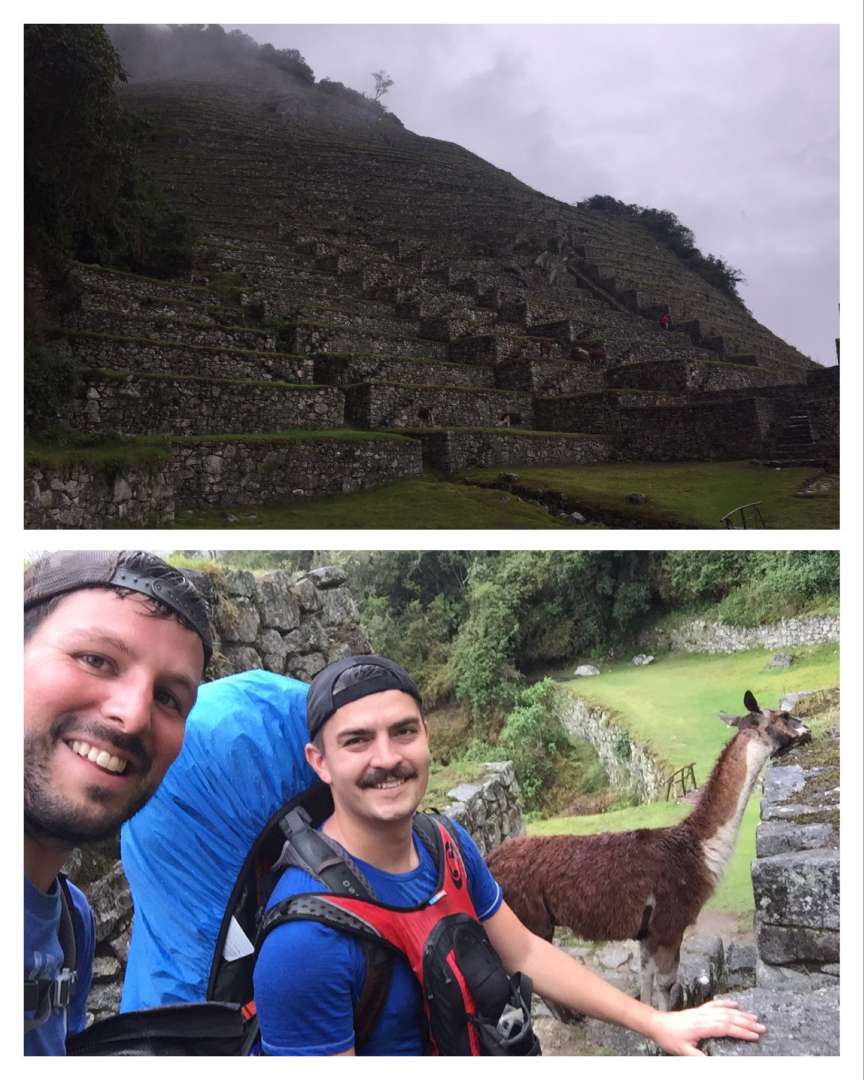
Exhausted, we reached our last camp at 2700 m. So we had 'lost' 1000 m in altitude in 2.5 hours.
All groups on the Inca Trail were in close proximity at this camp, whereas before, the groups from other tour operators were often out of sight.
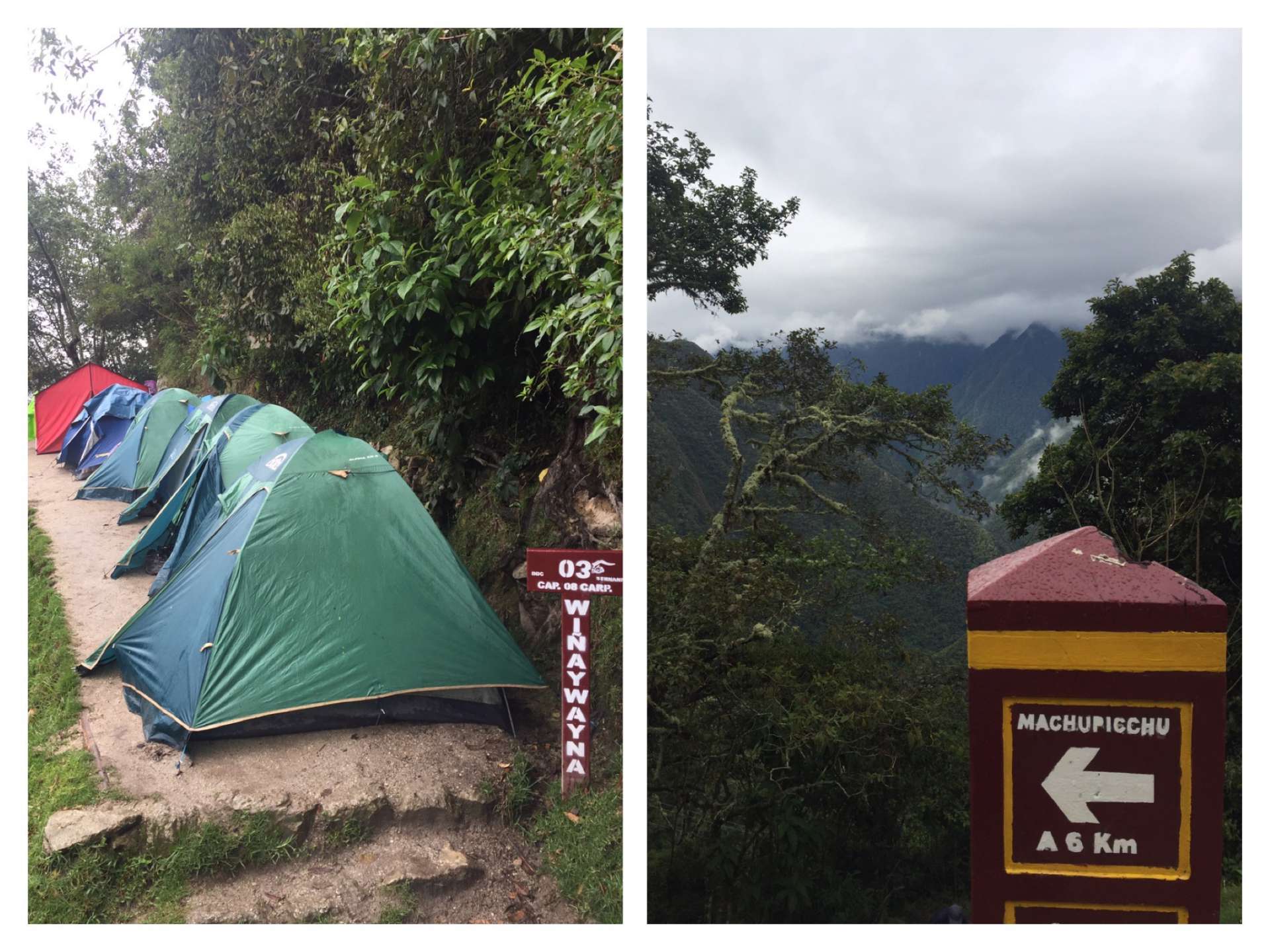
After everyone had arrived at the camp, we had another nice evening together, where a lot of nonsense was talked about. With some people not always intentionally and not always very wisely. Unfortunately, even on the third evening, there were those pointless questions from 'Donald'.
Fortunately, the rest of the group had fun.
We said goodbye to our porters here since they set off early the next morning. Those poor guys had certainly earned their tips.
The alarm clock or rather the knocking at the tent was already at 3:45 am. Wake up, have tea, and quickly pack everything up. Because the guys had to catch their 5:30 am train in Aguas Calientes.
We waited at the camp exit until 5:30 am because that's when the gates open and the final stretch can be hiked.
It was only about 5 kilometers. The first destination for today was the 'Sun Gate' - Inti Punku - from where you can actually have a great view of the ruins of Machu Picchu.
But once again, the weather, in the form of clouds, spoiled our plans. We didn't see much when we arrived at 6:20 am. Only a small part of the ruins.
After waiting for about an hour, first for the rest of the group and then for the clouds to clear, we moved on. From here, it wasn't far to the entrance.
Above the entrance, we had a good view when we arrived. There we were finally. It was very impressive.
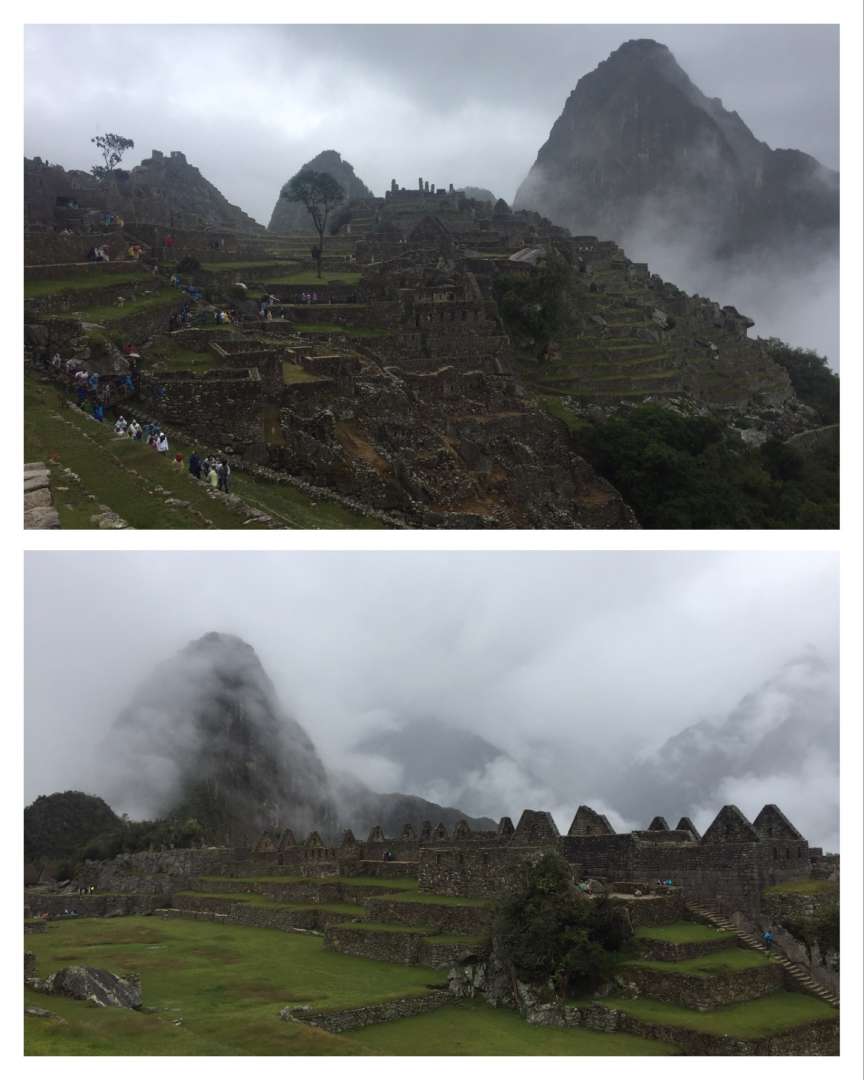
Only a few clouds obscured our view. But that was about to change very quickly. It didn't take long for the rain to start and the clouds to cover everything. It started pouring rain from all directions. And it was not going to stop for a while.
We took refuge in the restaurant located at the entrance. We had a beer and a snack. It was ridiculously overpriced here.
Only at 10 am did we leave the restaurant and enter the site. At that time, the rain had subsided. We started a guided tour with our guide and the rest of the group. He told us many interesting things again.
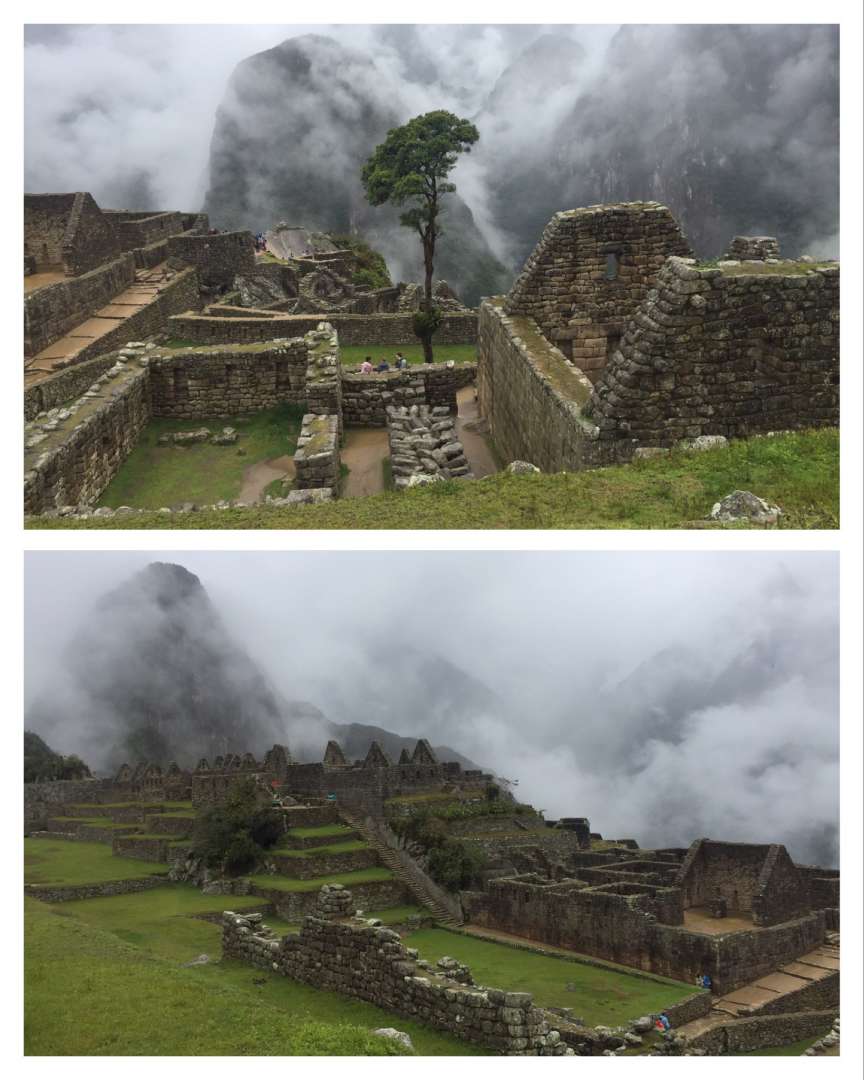
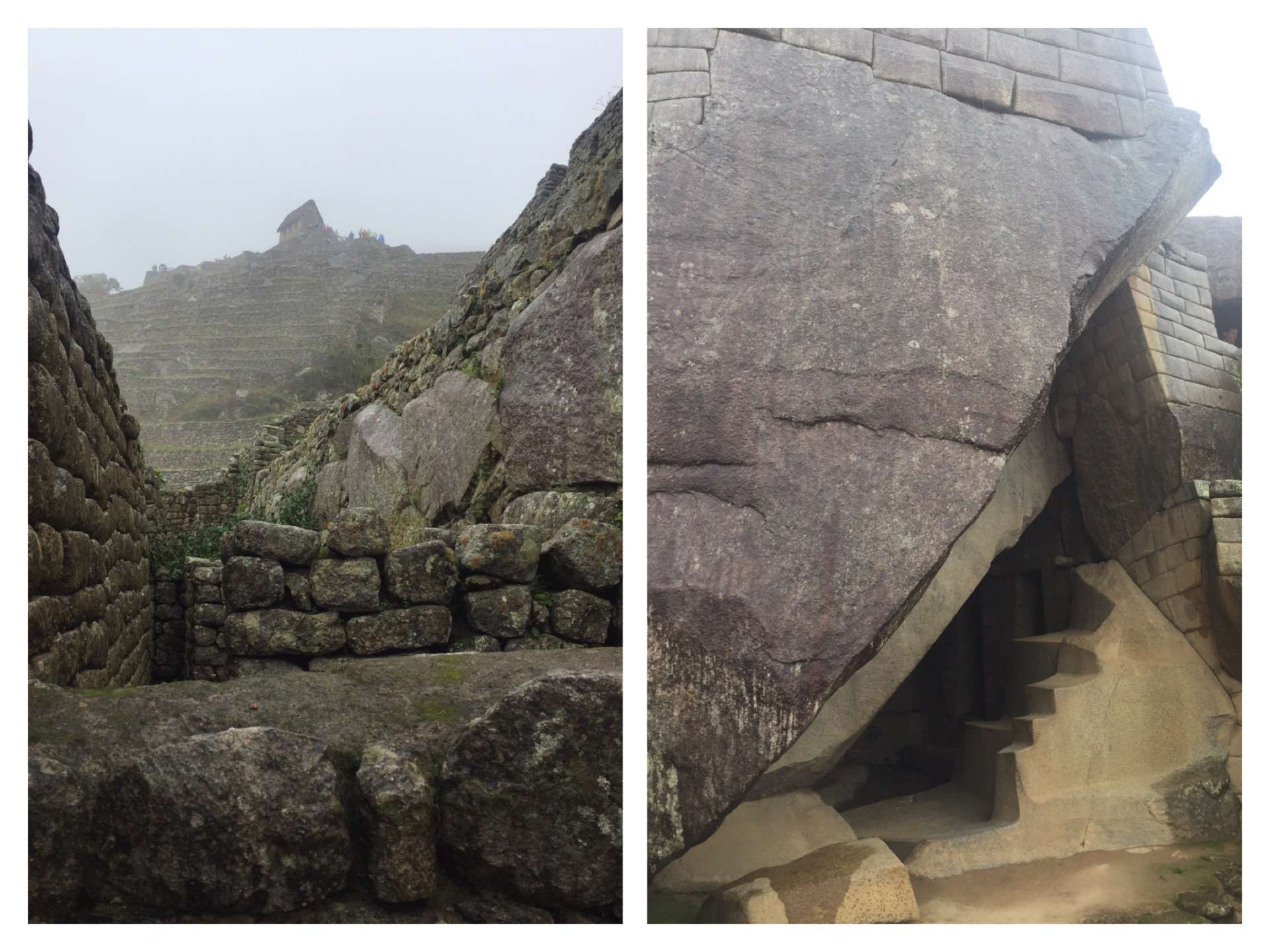

Since we had tickets to climb 'Huayna Picchu', we wanted to use them. We had to enter the entrance to the mountain between 10 and no later than 11 am. On the advice of our guide, we did so at 10:55 am. But unfortunately, this turned out to be a mistake. Unfortunately, there was no weather god among us.
10:30 am would probably have been the perfect time to start. Because when we started, the visibility was quite acceptable.
But even on the first meters of the ascent, it started raining. The rain became heavier every minute. After about 30 minutes of extremely steep ascent, I arrived completely soaked at the top. The expensive rain jacket didn't stand a chance against the amount of rain.

The ascent consists of 90% steps. The slopes are so steep that it is sometimes impossible to hike without holding onto the ropes at the edge. In addition, the stairs turned into a riverbed.
When I finally reached the top, of course, there was pure disappointment. There was absolutely nothing to see at the top. I waited there for about an hour, hoping that the clouds would clear.
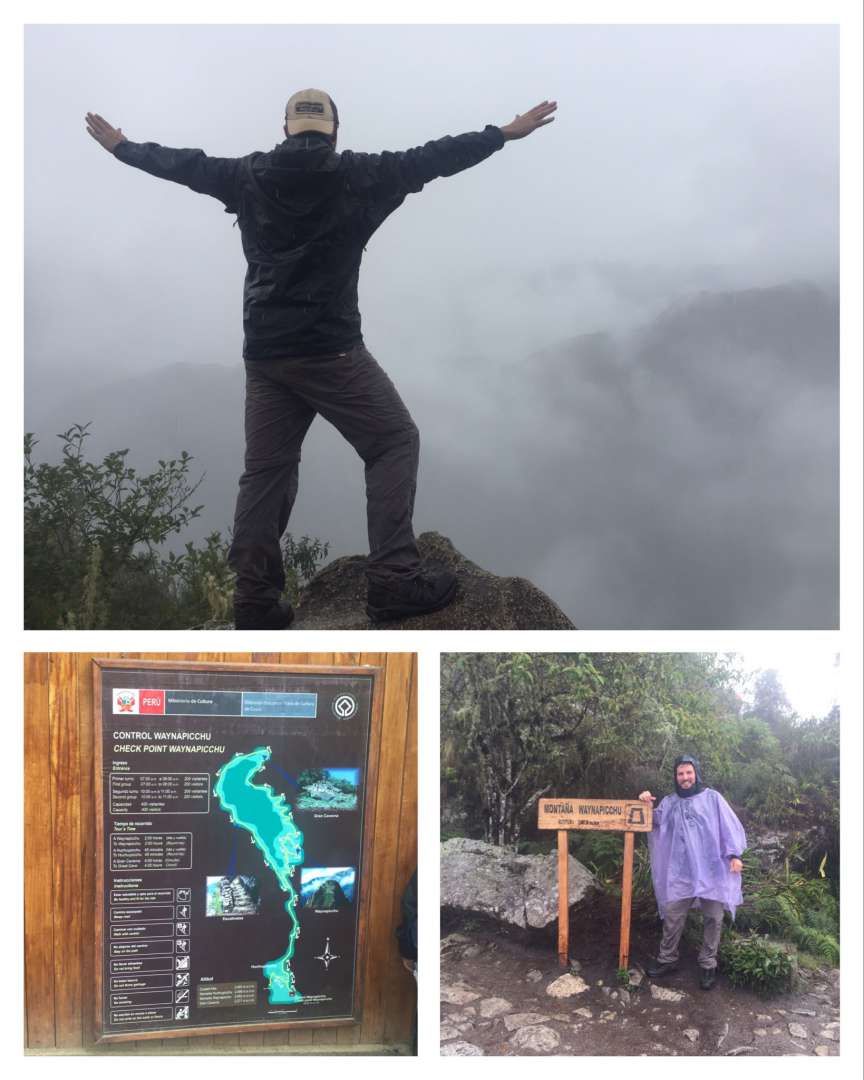
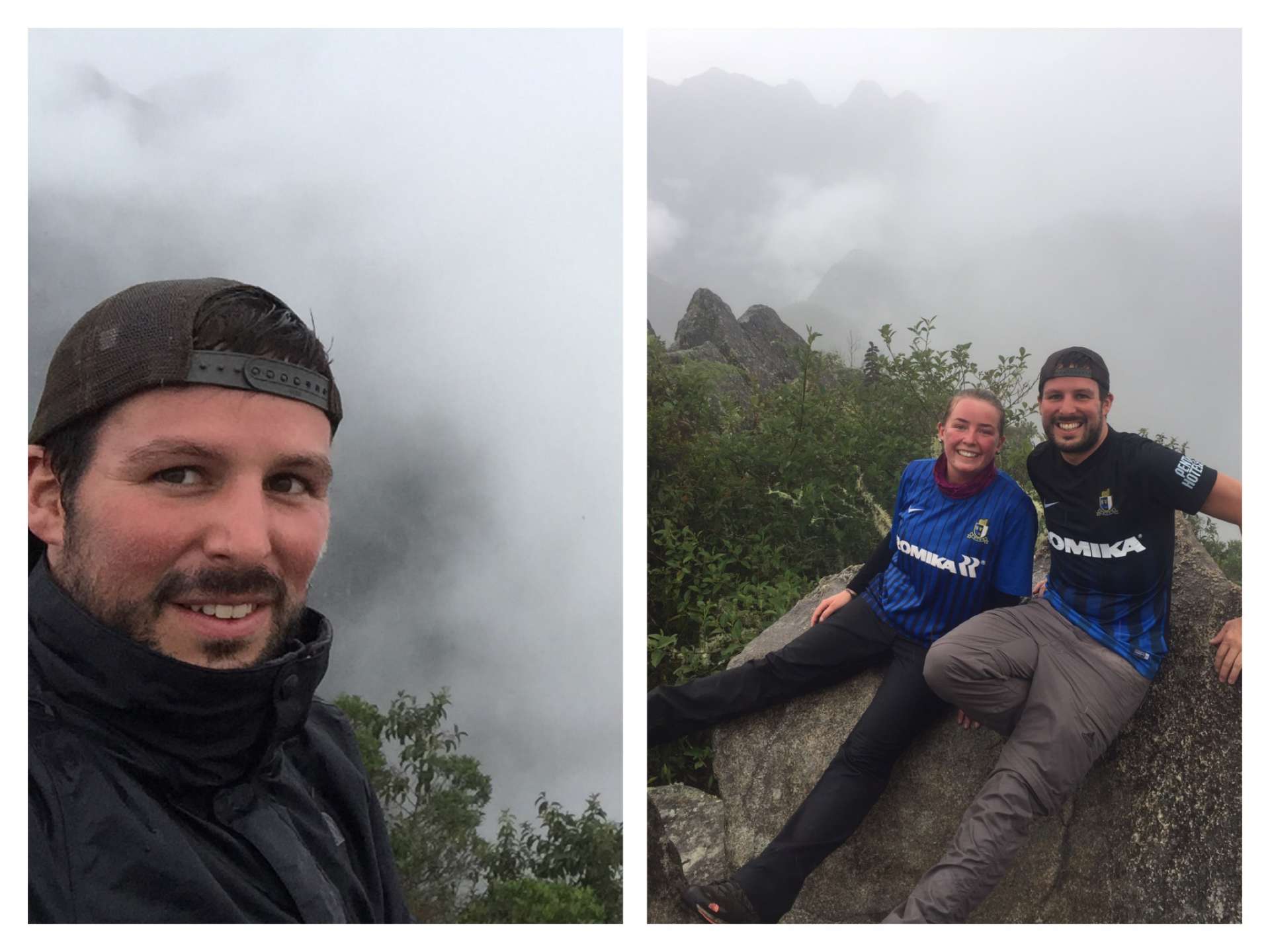
Eva had given up after only a few minutes and started the descent. Normally, as the experience so far showed, the clouds disappear as quickly as they came. But here, there was still no improvement in sight. Actually, I wanted to wait even longer, but a guard told all visitors to leave the mountain because the rain had made the risk of sliding too great and soon it would no longer be possible to descend.
25 minutes later, I was back down again, where Eva was already waiting.
Outside the site, we changed clothes and put on our dry clothes. It was good that backpacks are not allowed inside the site and have to be stored outside.
The rest of the group had already started the journey back to the valley.
There were two options to get to Aguas Calientes, the town where the train back to Ollantaytambo departs.
Either on foot or by bus for $12 or 41 Soles. Of course, given the weather, we opted for the bus.
But just as I was about to pay, the system crashed. Somehow, systematically.
A cashier who became unfriendly with every request finally realized after 30 minutes that a handwritten ticket would work just as well since the bus would leave 5 meters away.
Once in the valley at the river, everyone got off the bus, walked across the bridge on foot, and then got on the bus again on the other side to drive a little further. In total, it took about 30 minutes.
In Aguas Calientes, a small cozy town located by the river, a hostel was waiting for us where we could take a free shower. After 4 days, we were happy to do so.
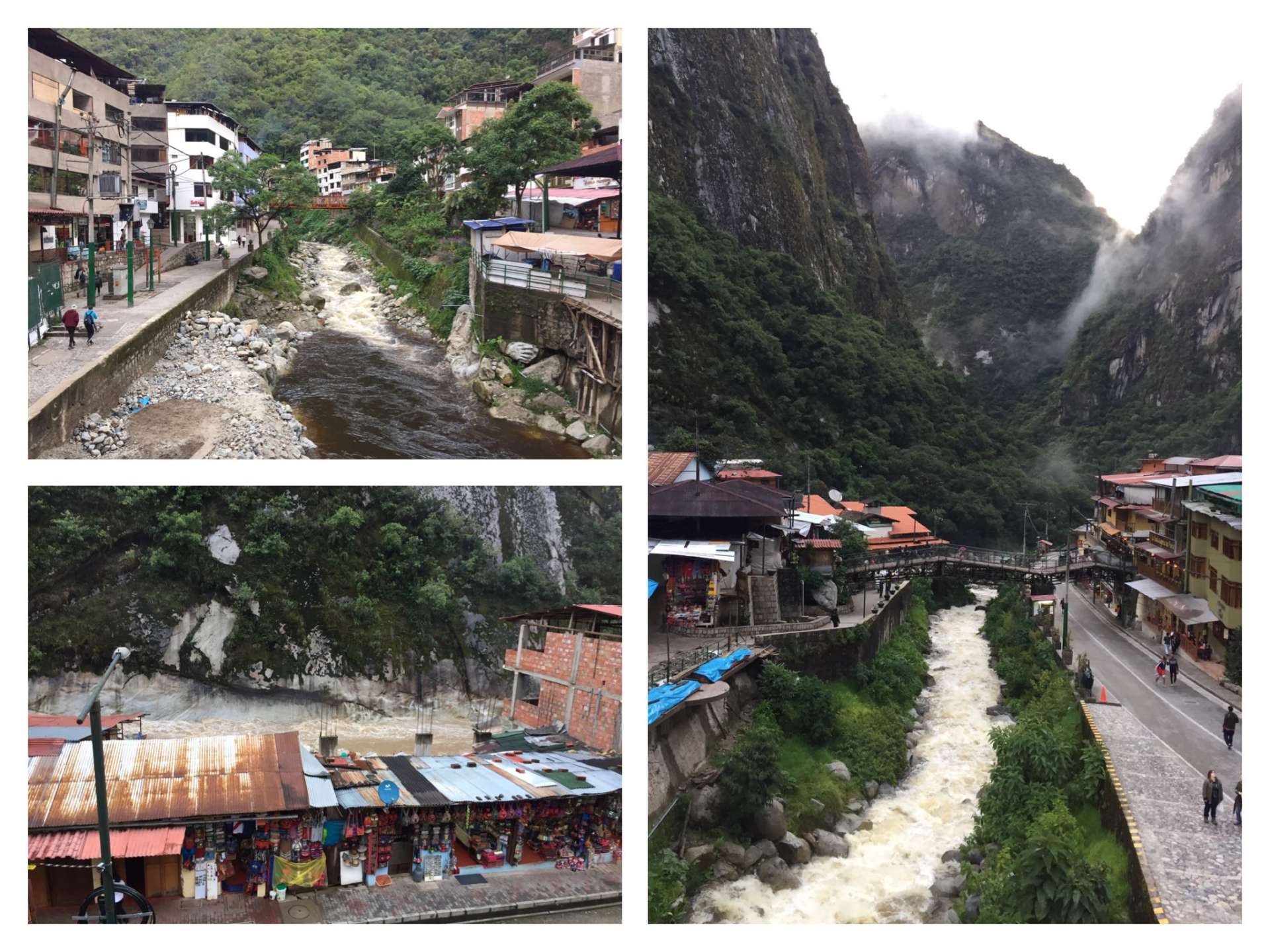
Then we had dinner in a restaurant, which was also included.
We stayed at the hostel for a while until we left for the train station at 6 pm. There, we met Martin, Milosz, and Aman again, a part of our group.
The train was once again very comfortable. The 2.5 hours to Ollantaytambo passed quickly. There, we were loaded into a minibus, which only started when it was full to the last seat.
Finally, at 11 pm, we finally reached our hostel in Cusco. Of course, it was the same one as before our tour since we had also stored our backpacks there.
Eva went to bed, and I joined another group in the hostel for 2-3 Pisco Sours, who were partying together in a club. All group members plus the guide! In our group, that was unthinkable, unfortunately.
At 3 am, I also went to bed because the next morning we were heading to the capital, Lima.
Machu Picchu did not welcome us with beautiful weather, but despite everything, we had an unforgettable tour. The Inca Trail was a challenge that we faced. It was a lot of fun, even though it was tough! And Machu Picchu was also beautiful. A gigantic architectural masterpiece!
Maybe someday I will come back, but not during the rainy season!
Абонирайте се за бюлетин
Отговор
